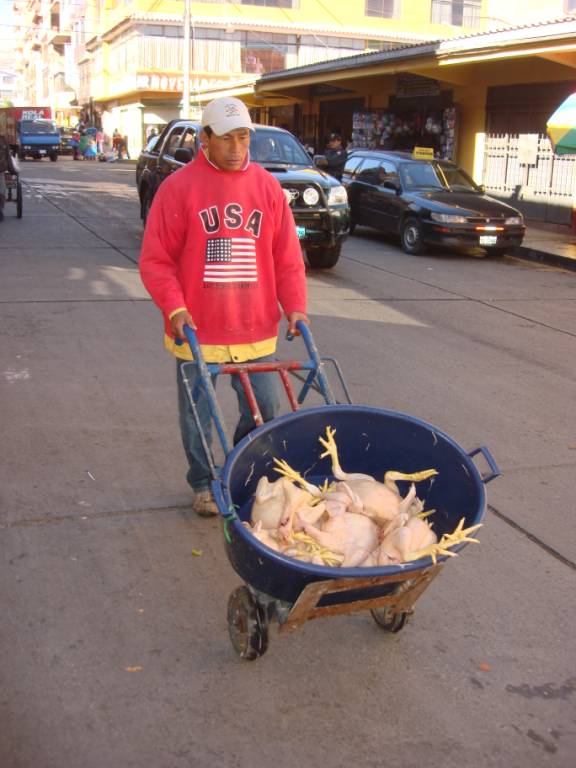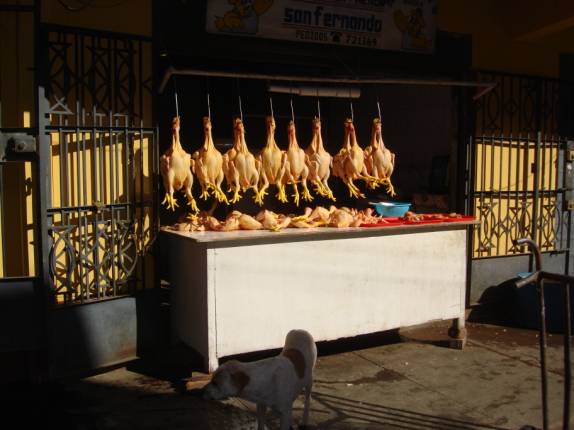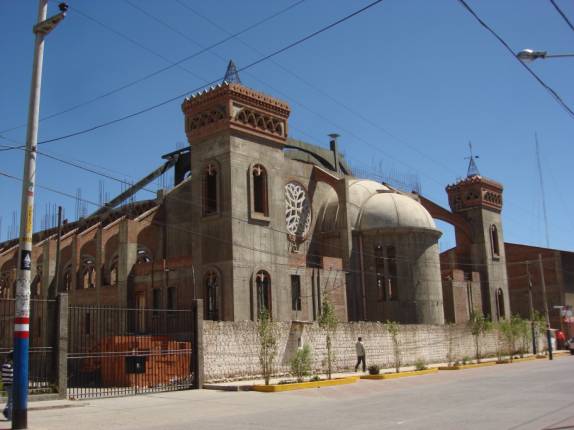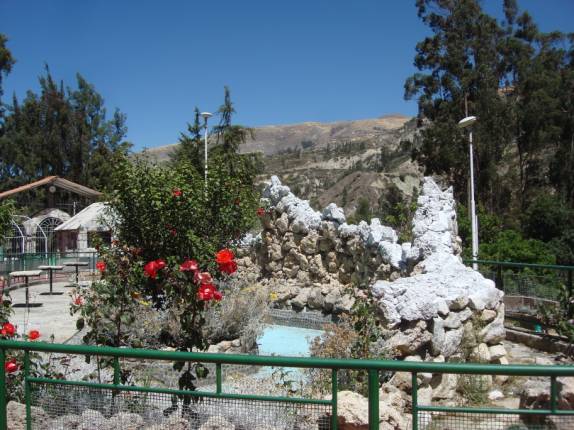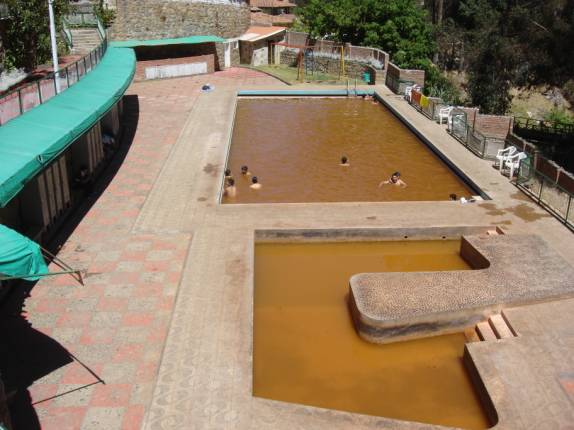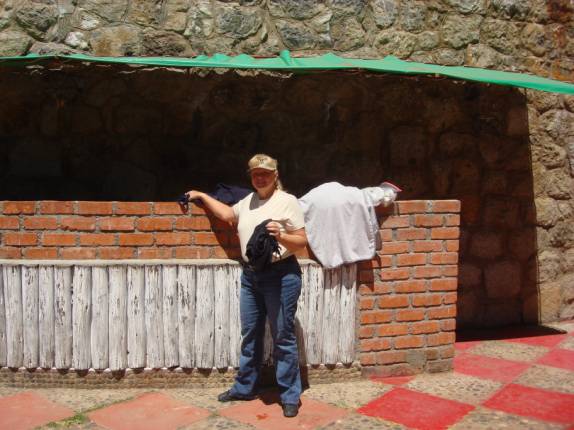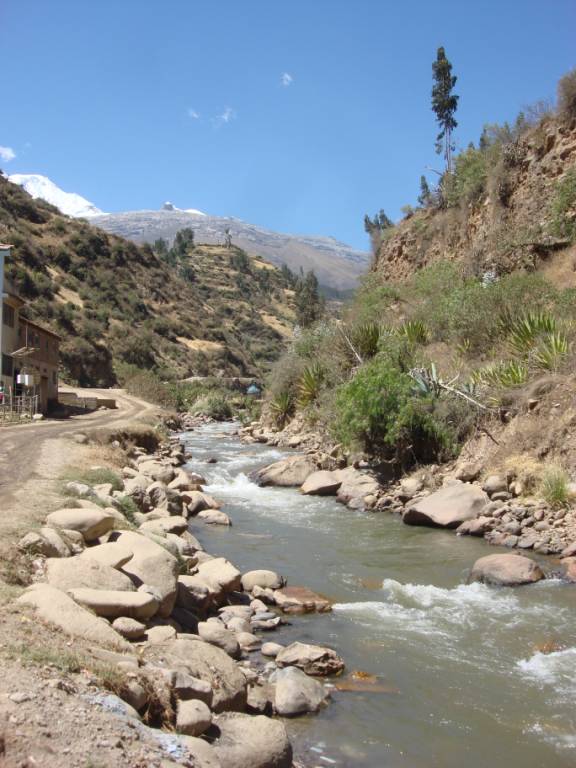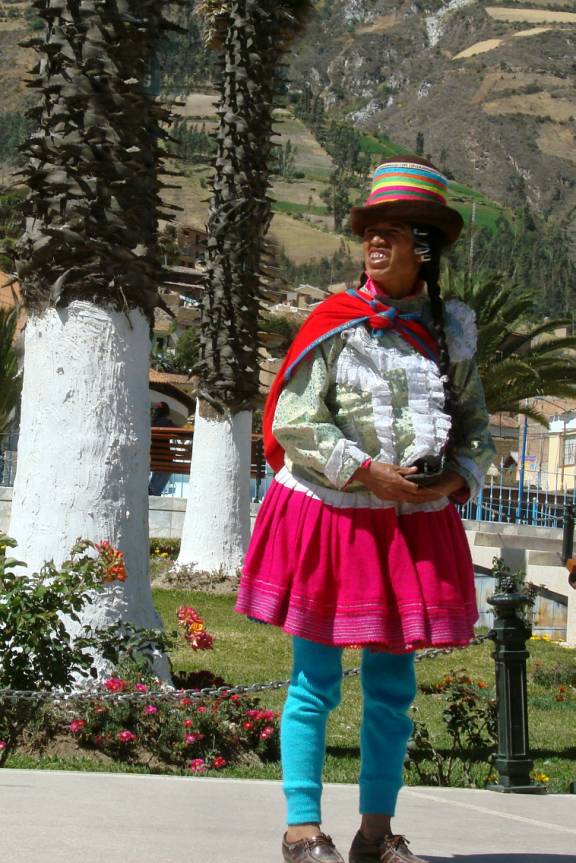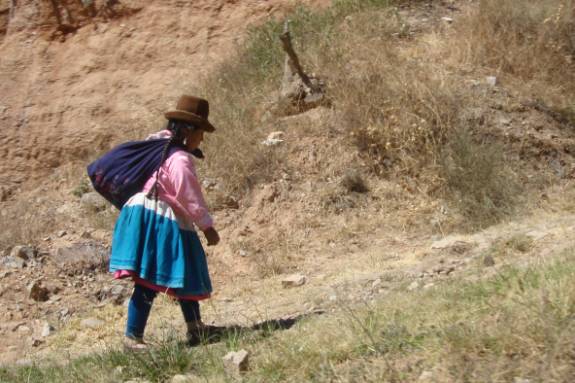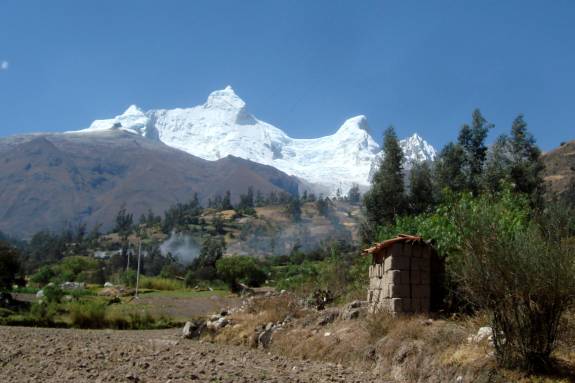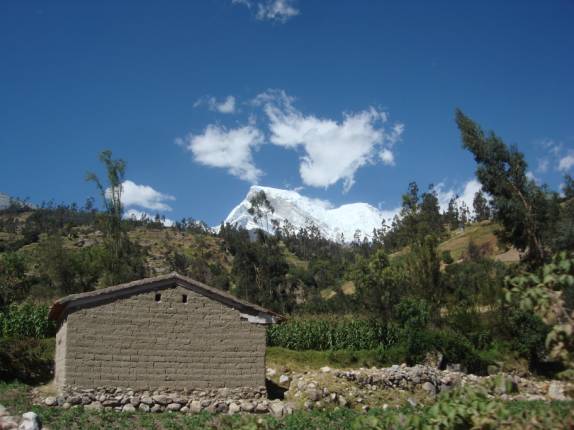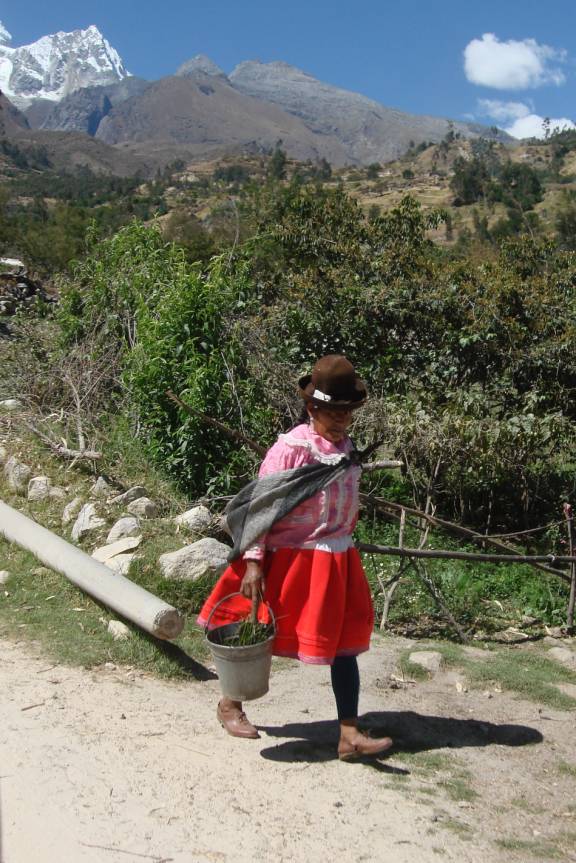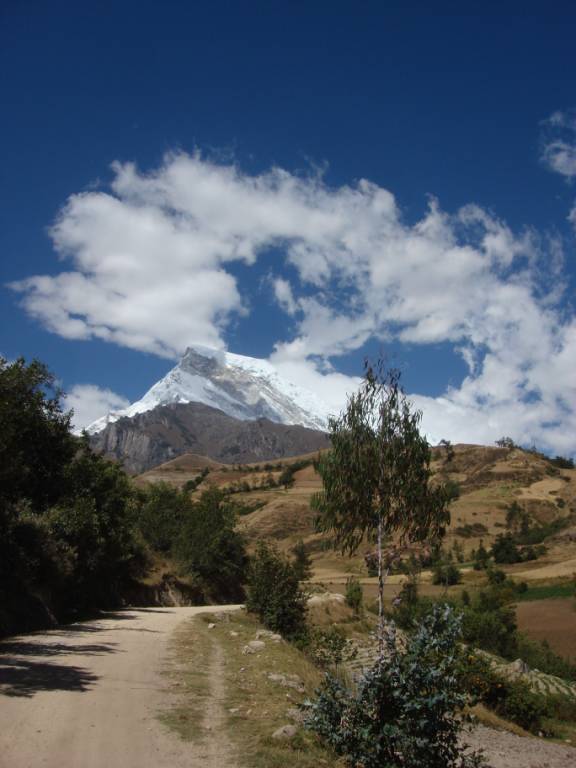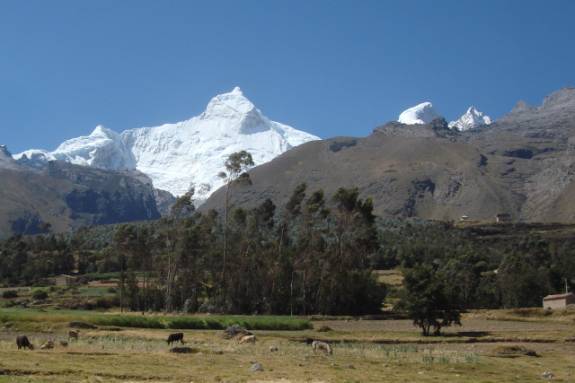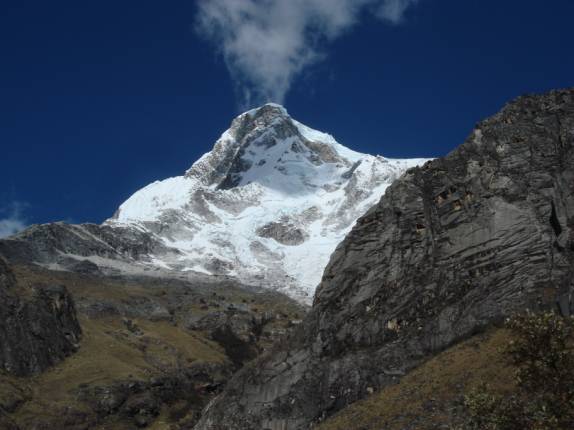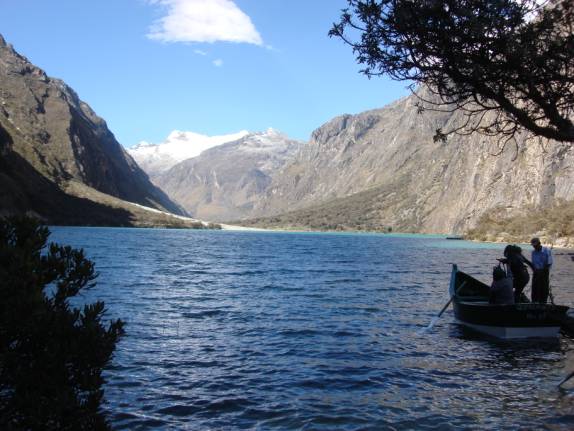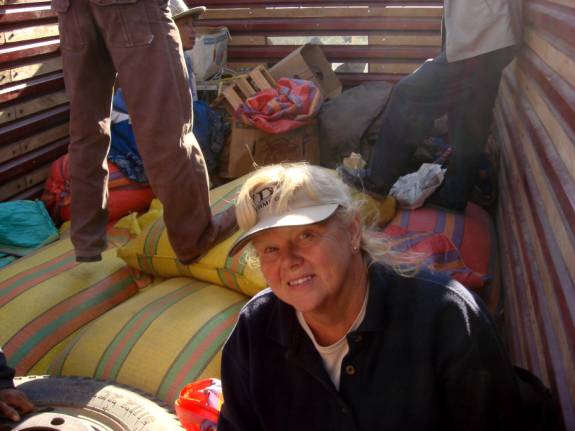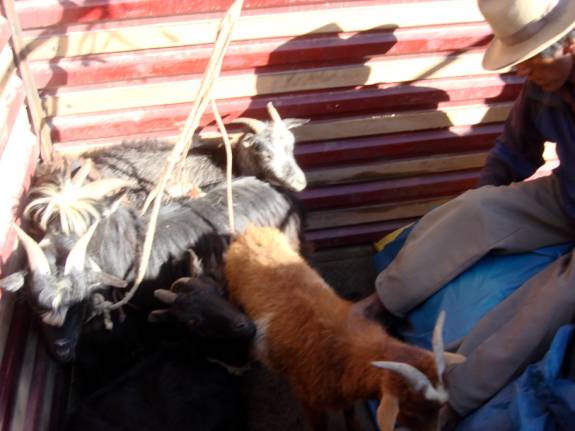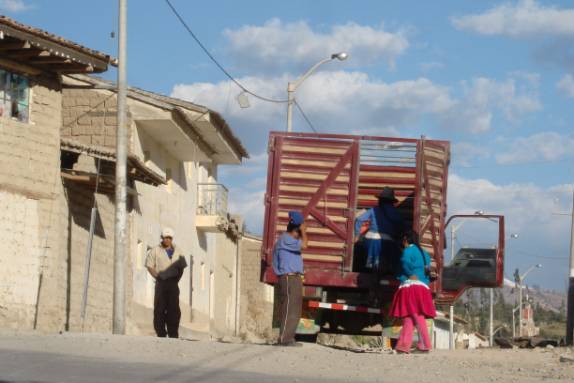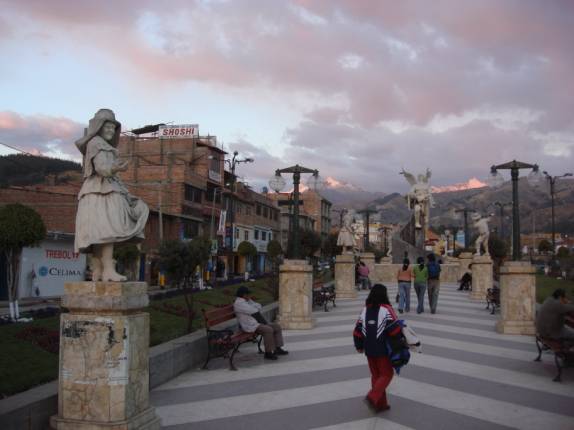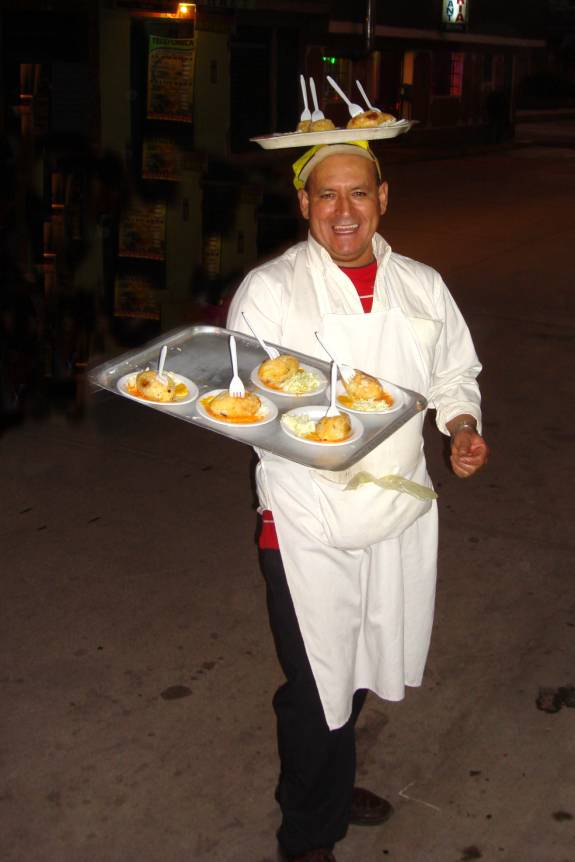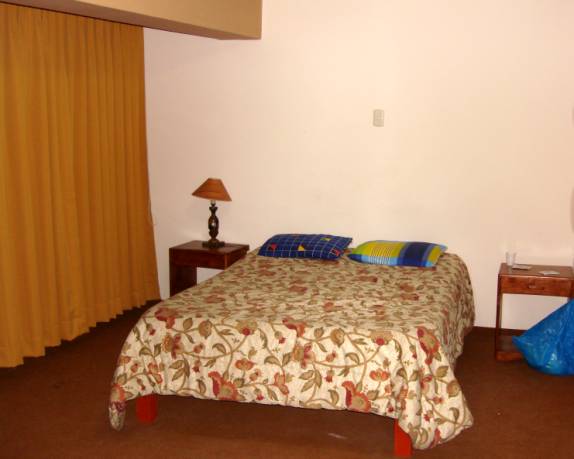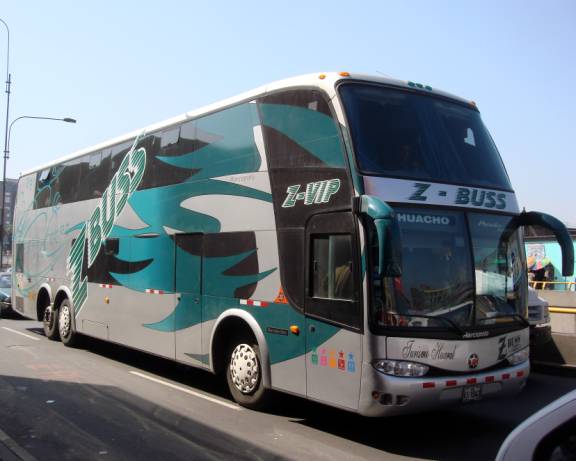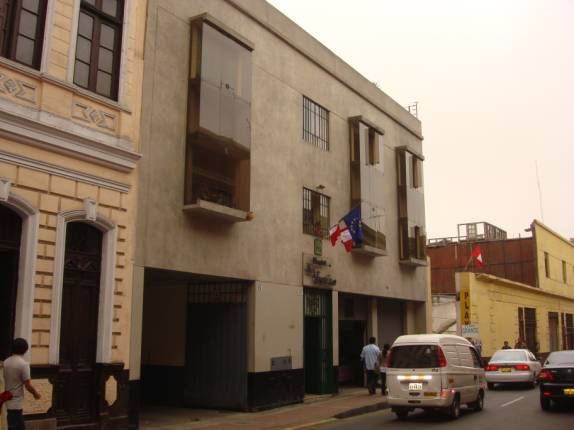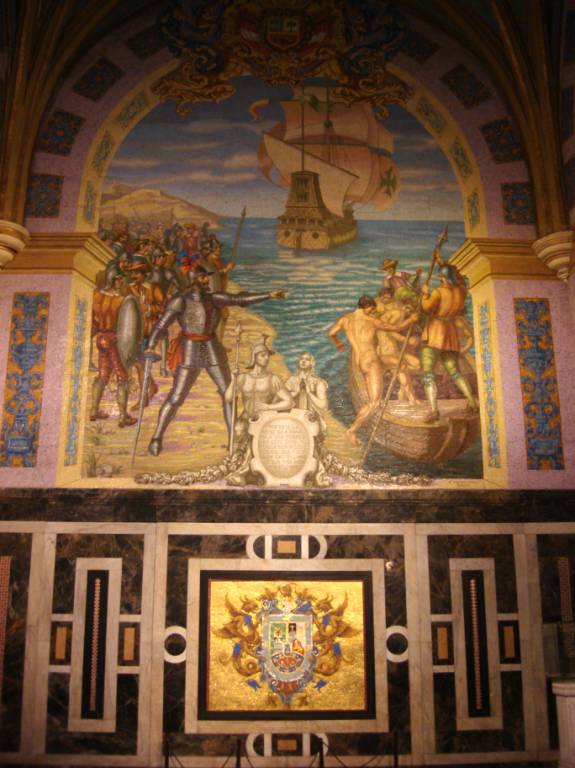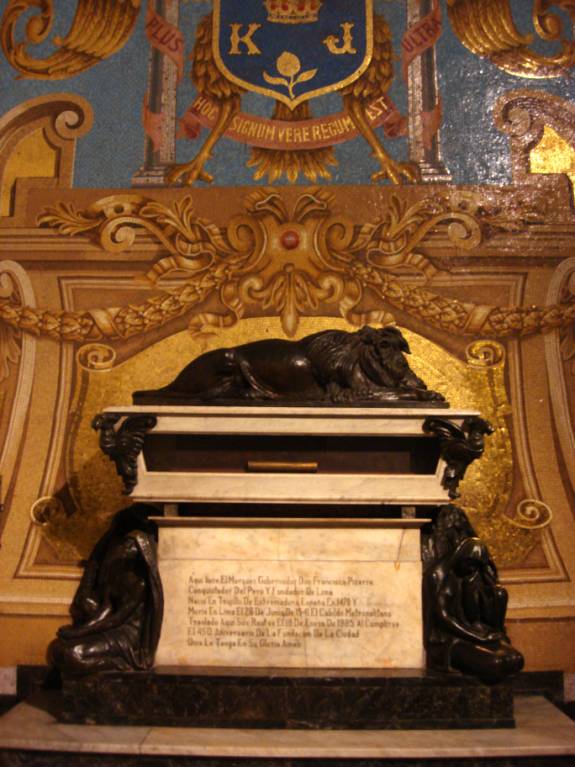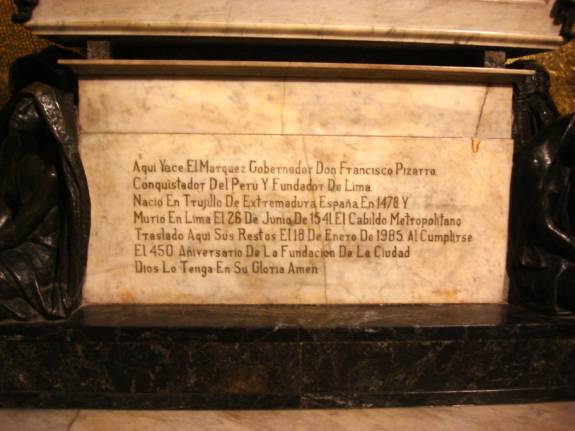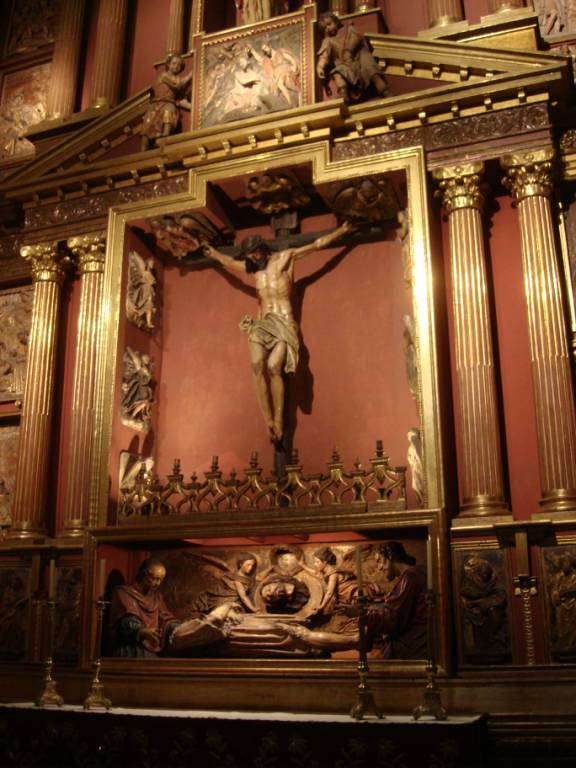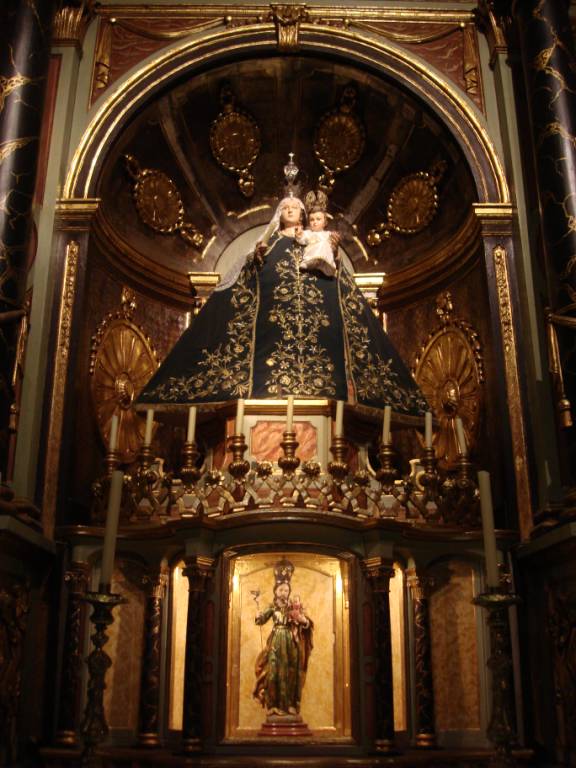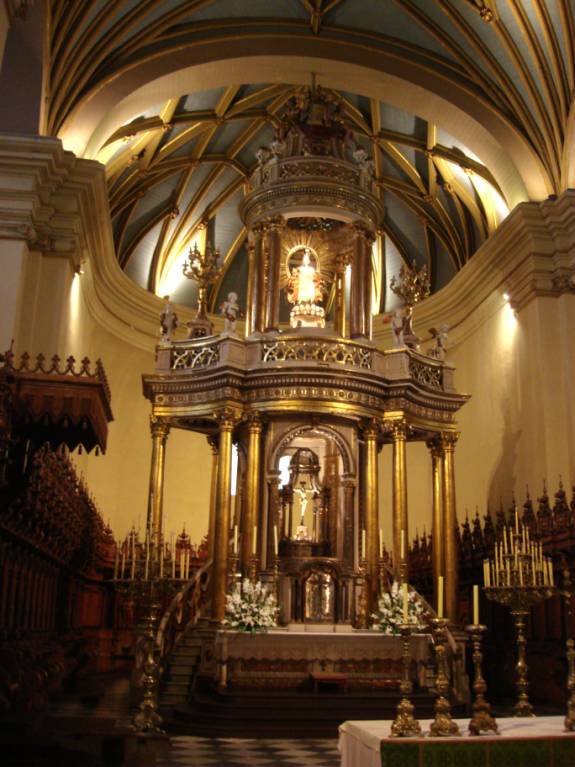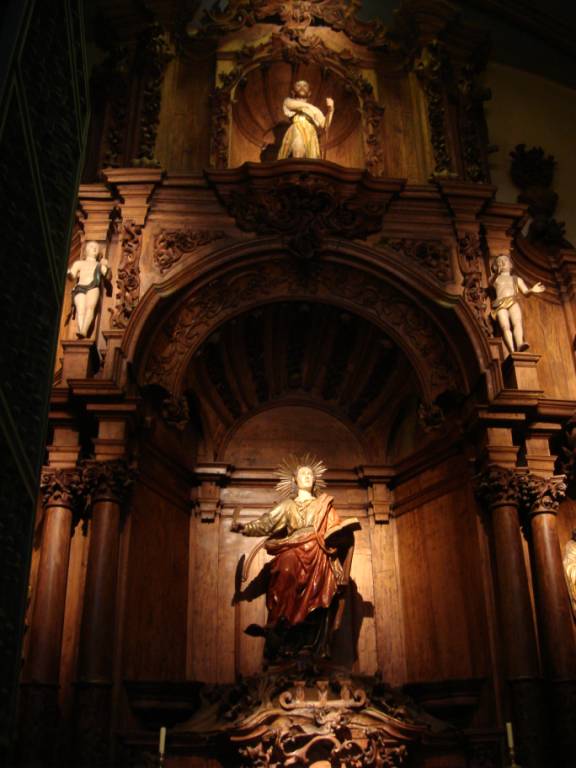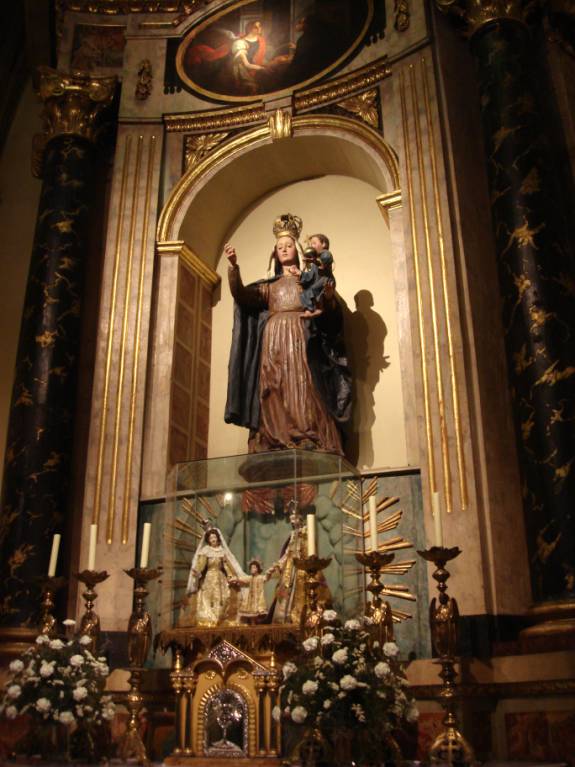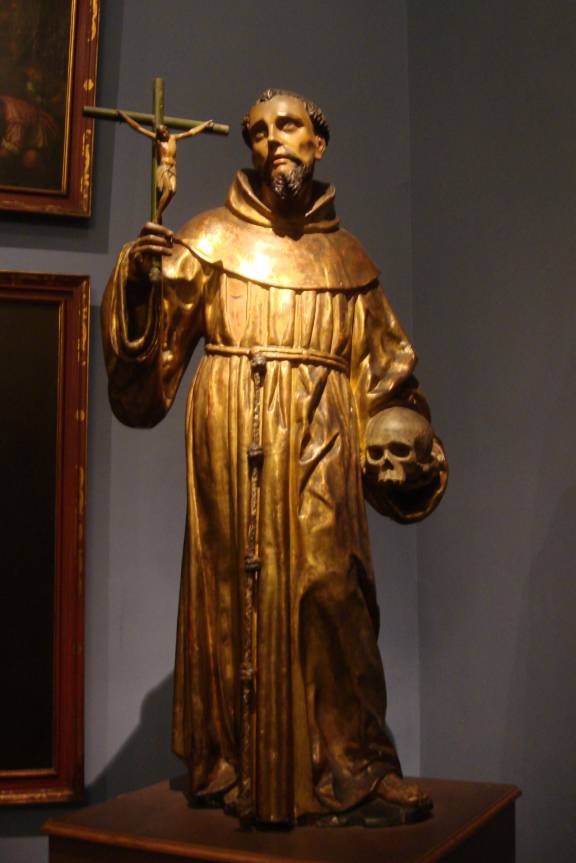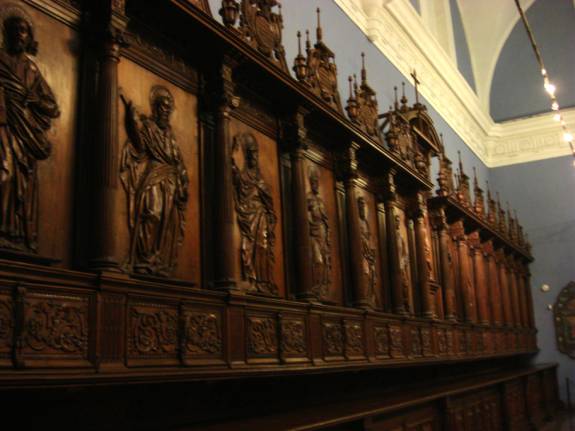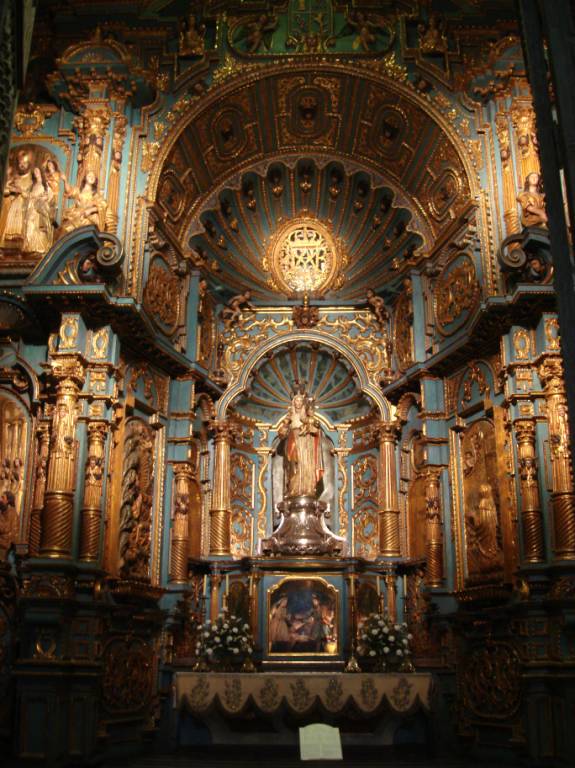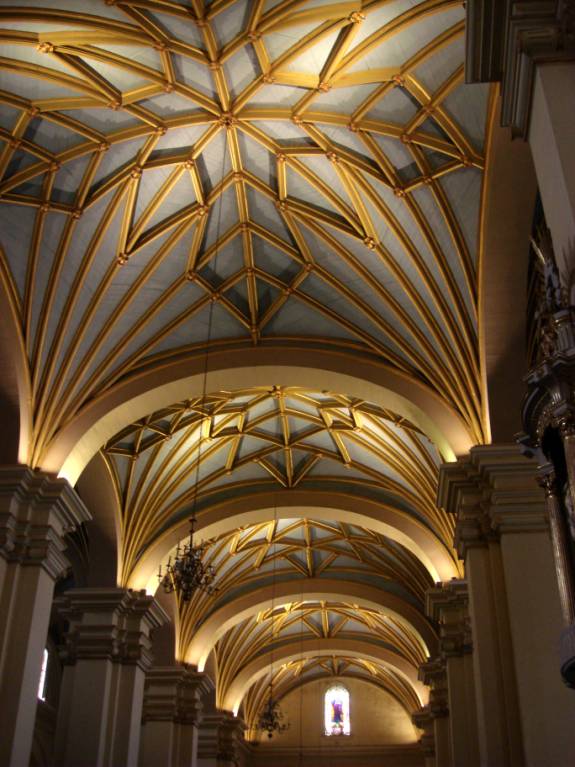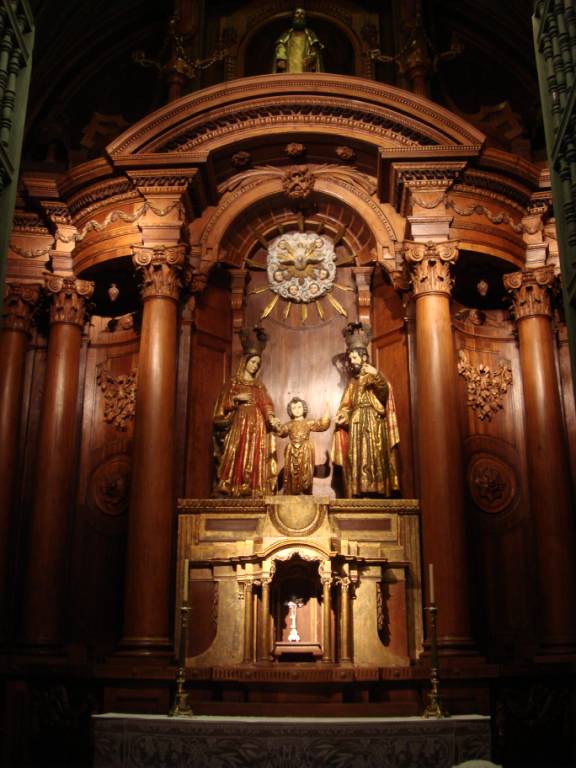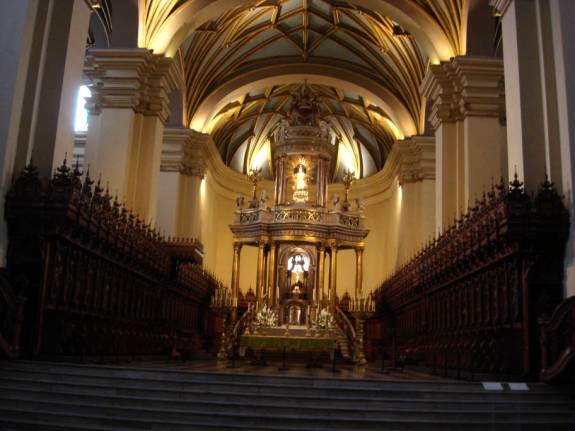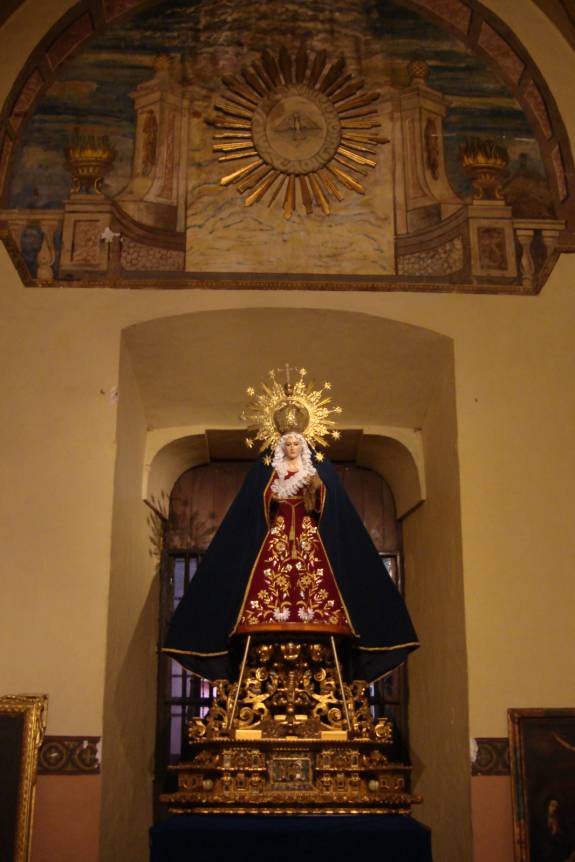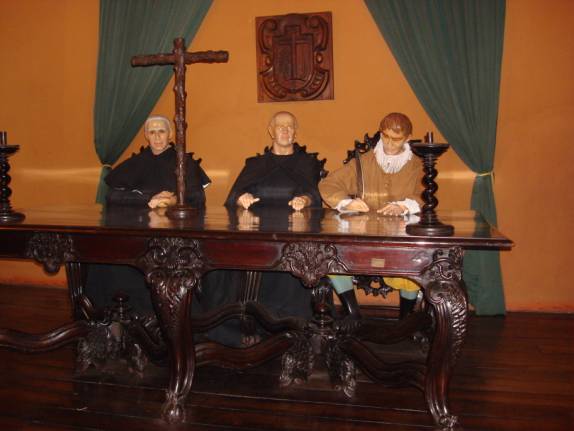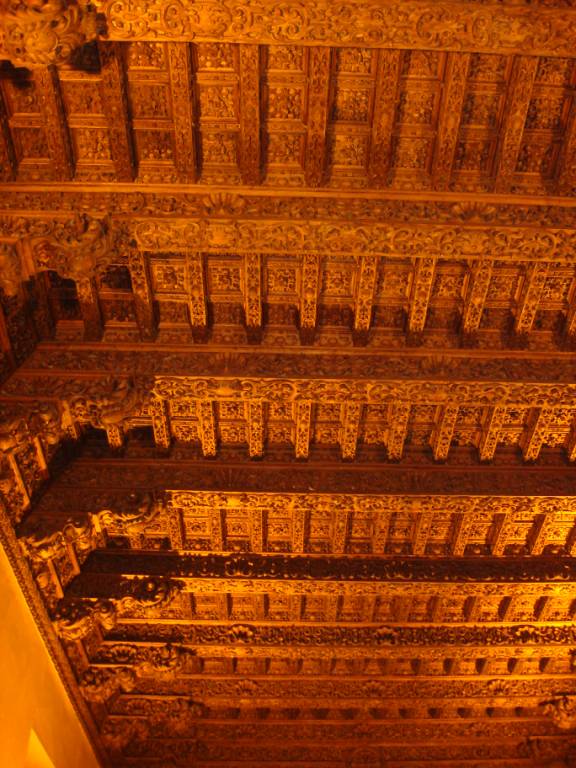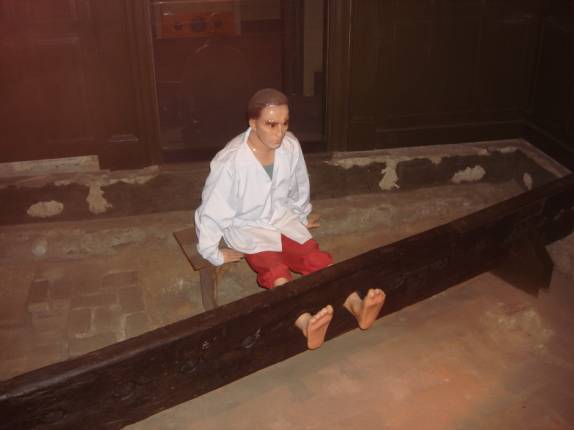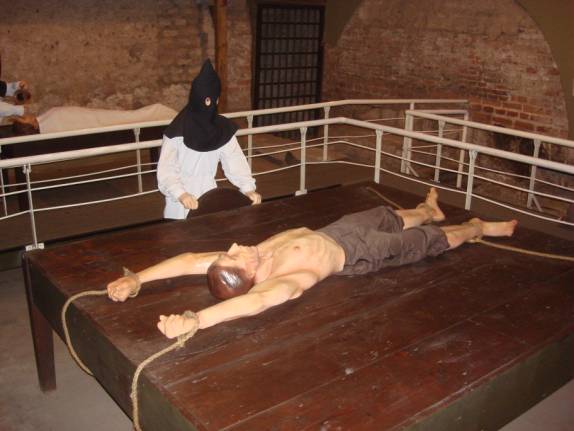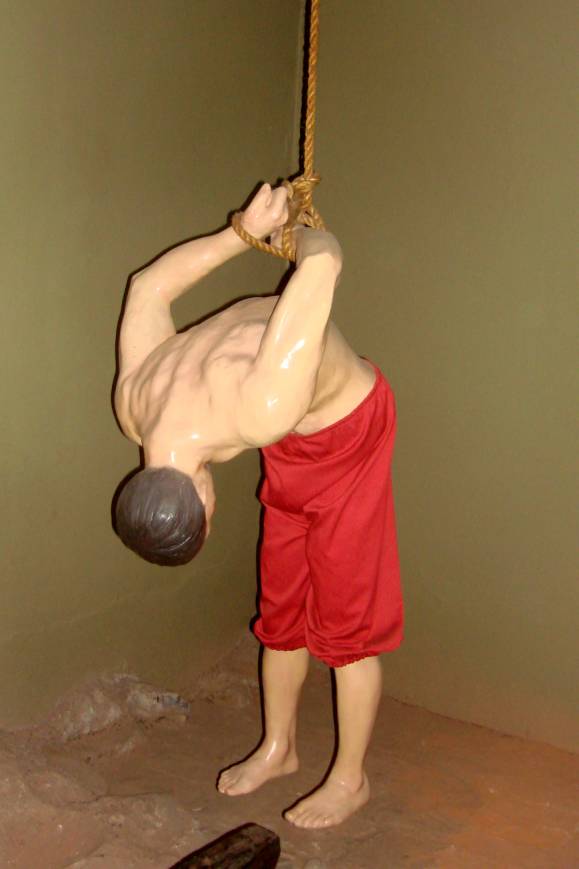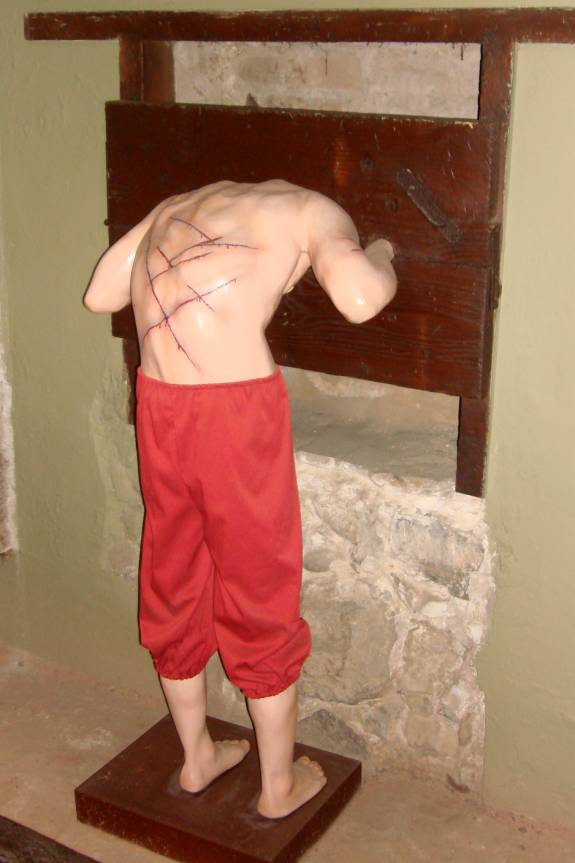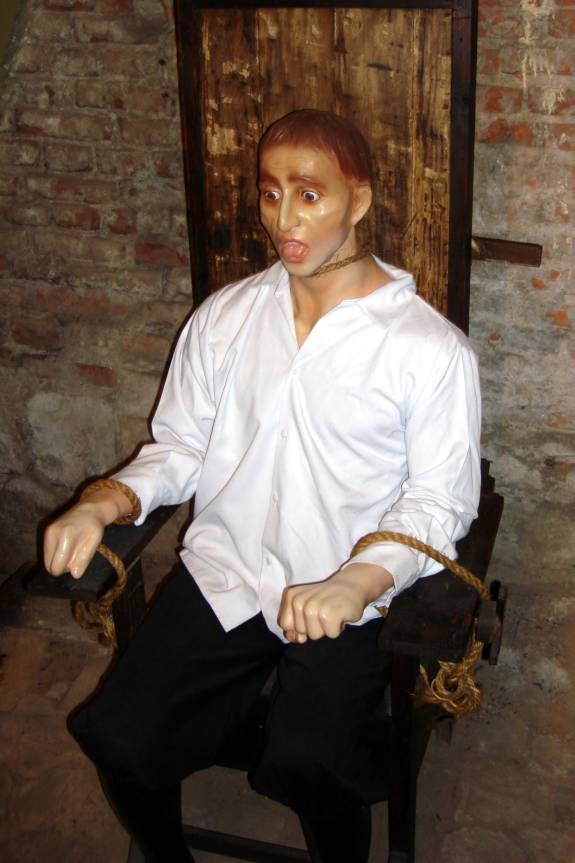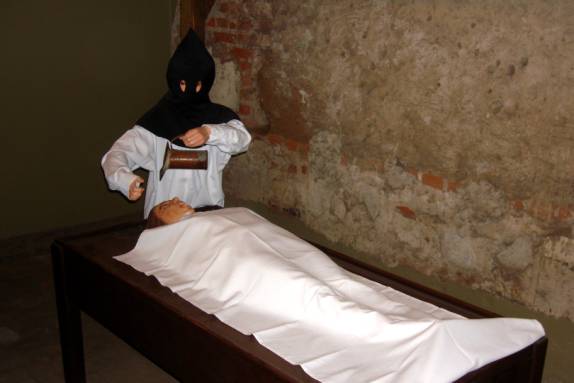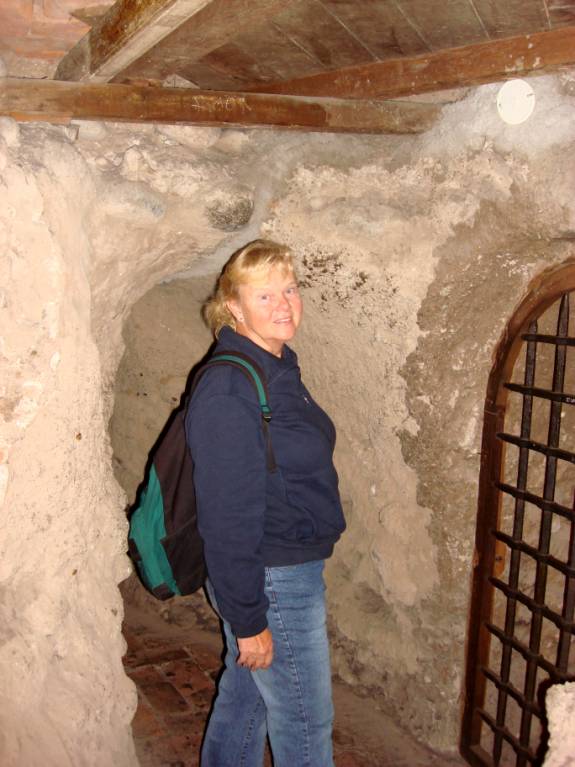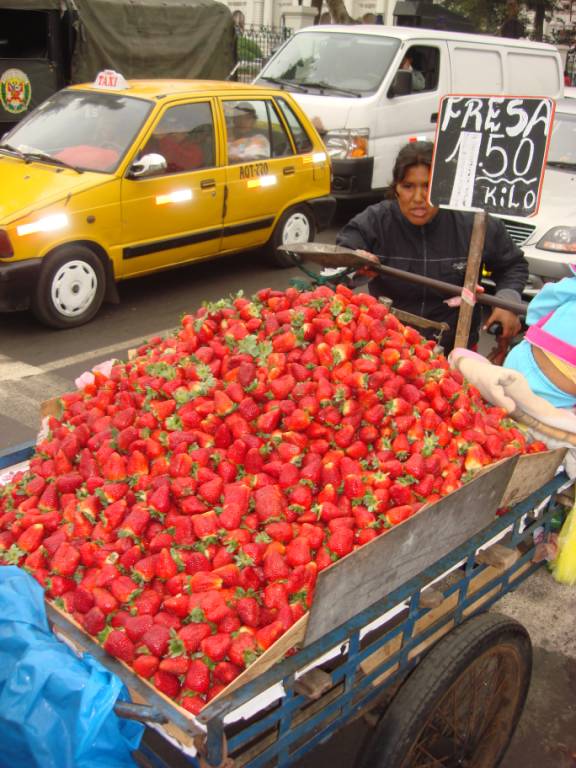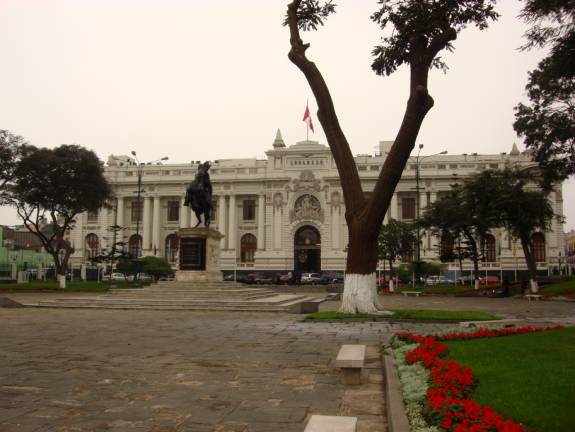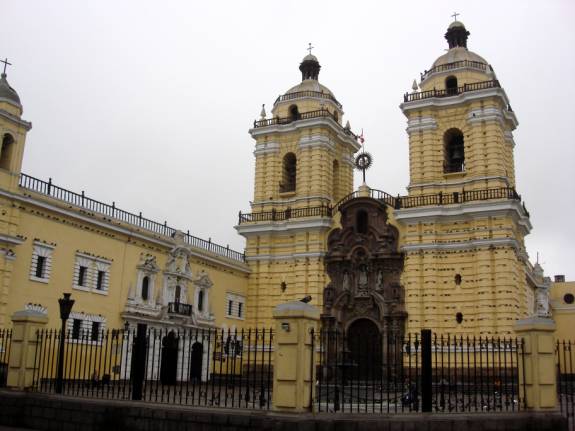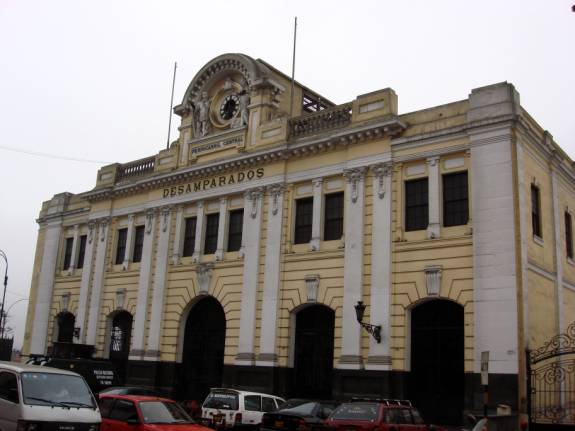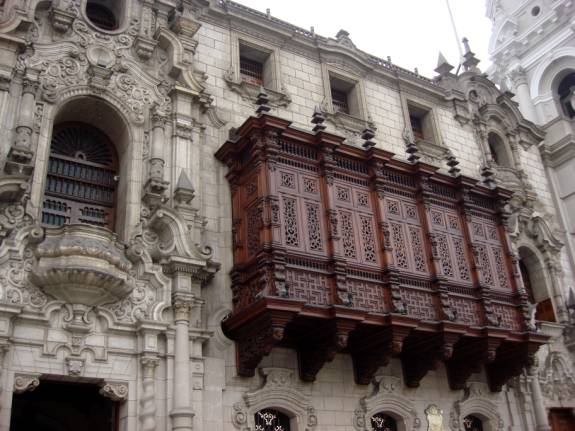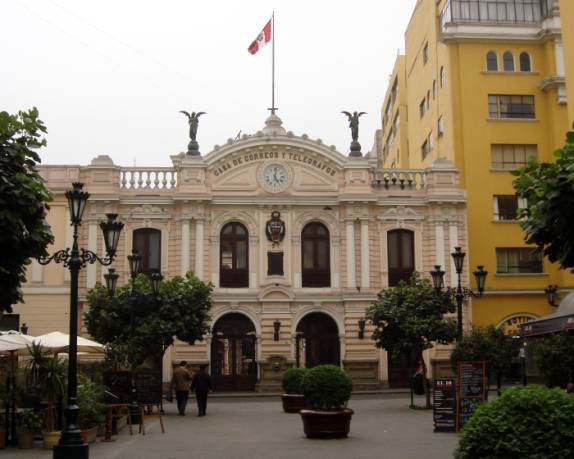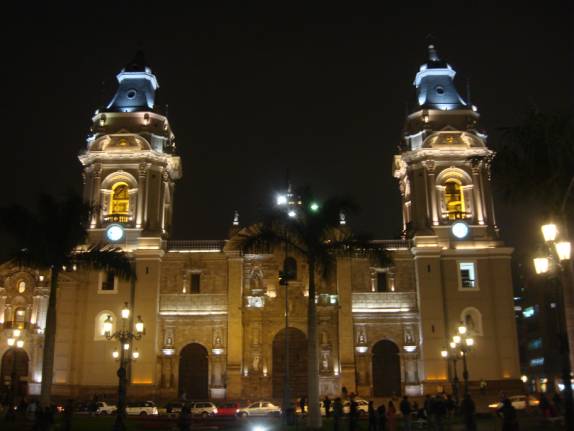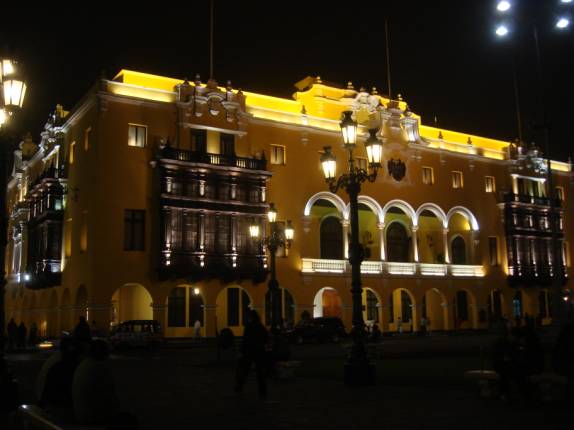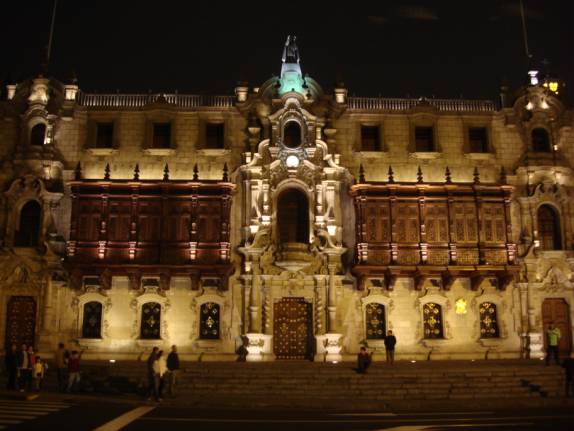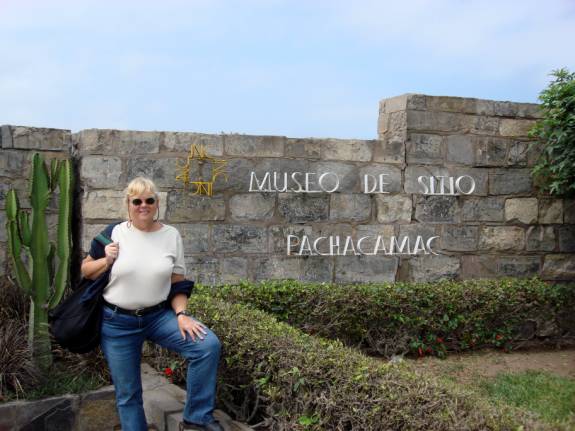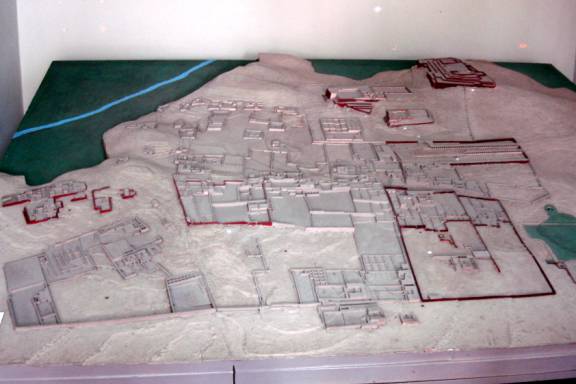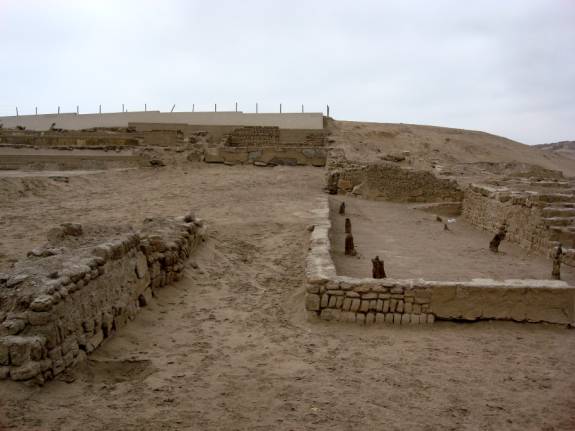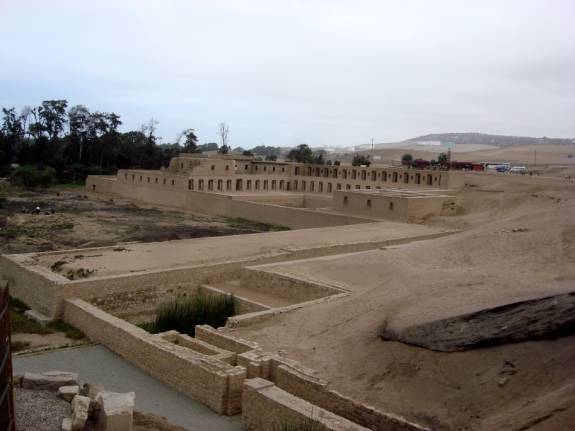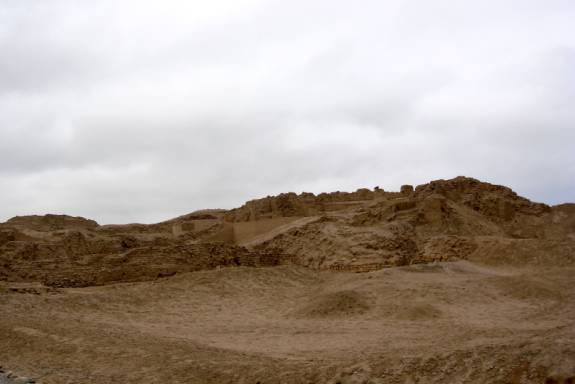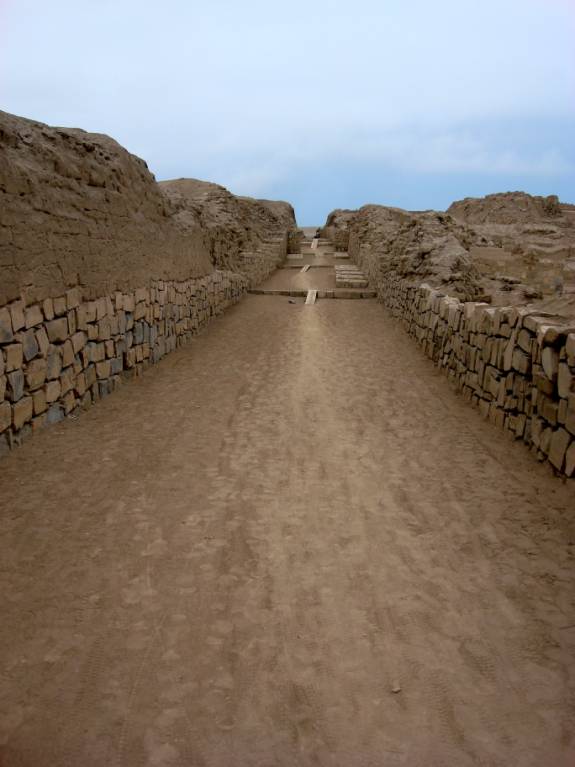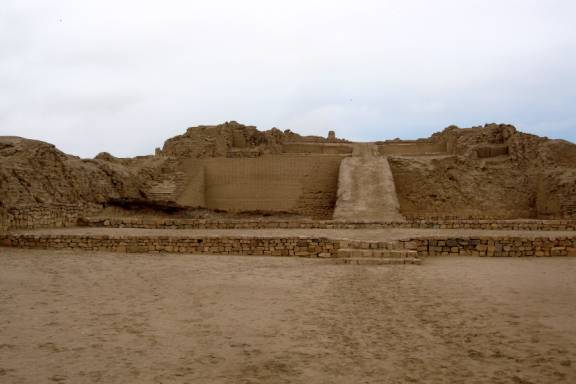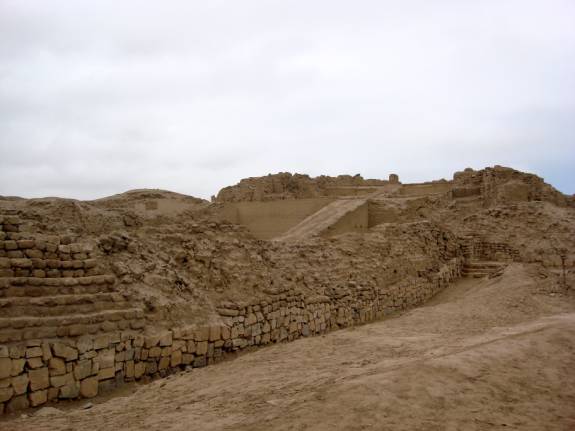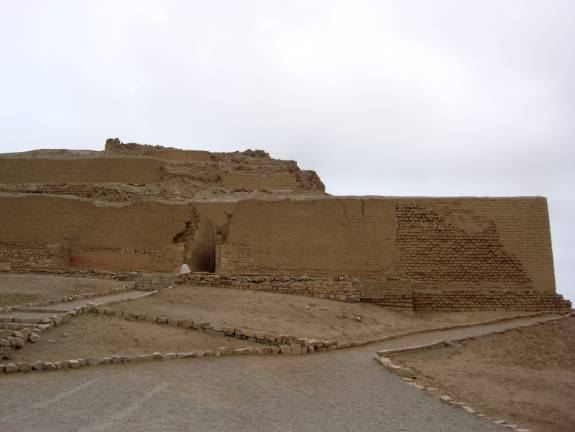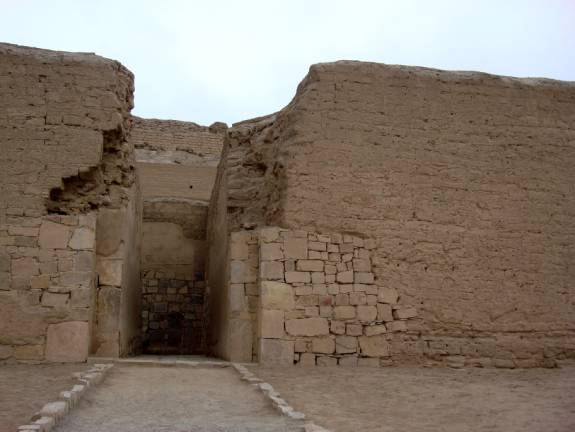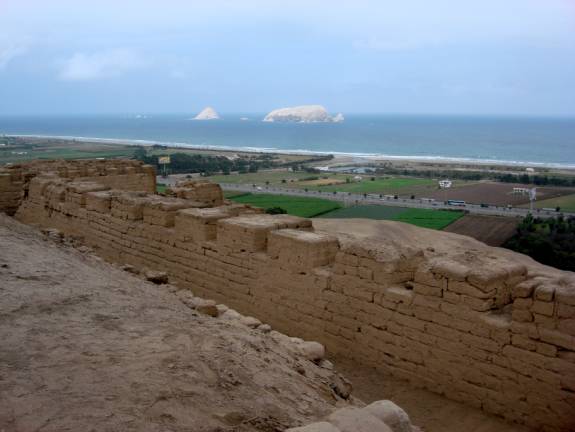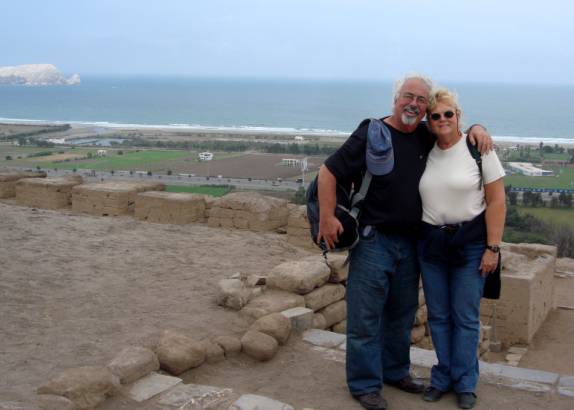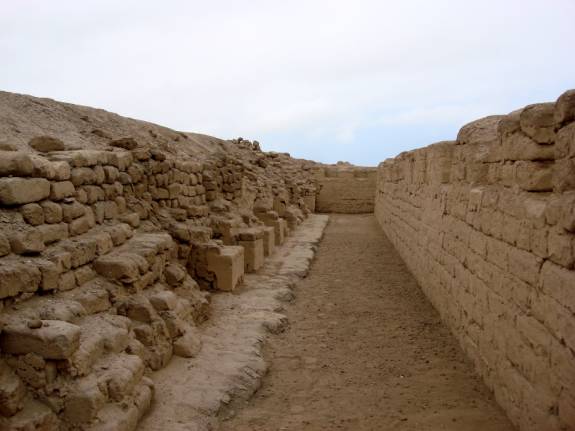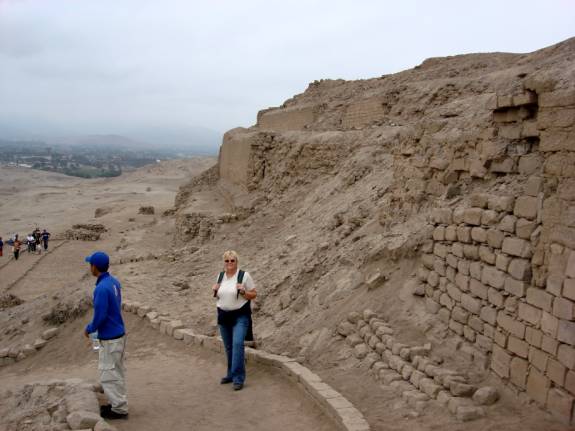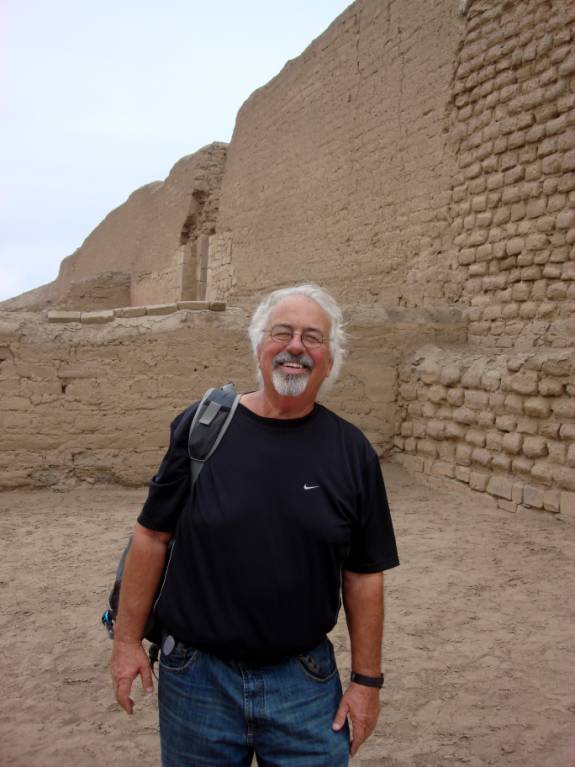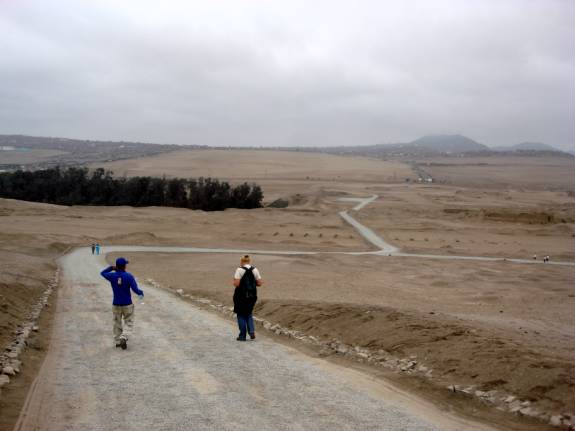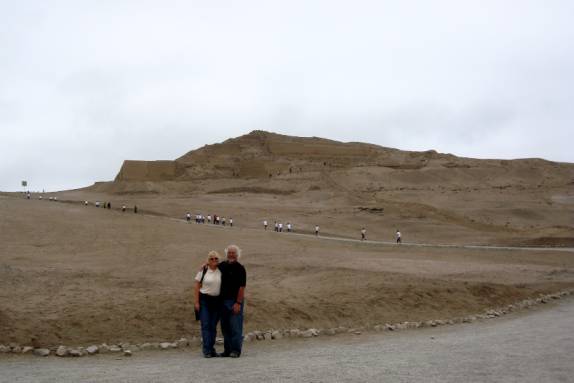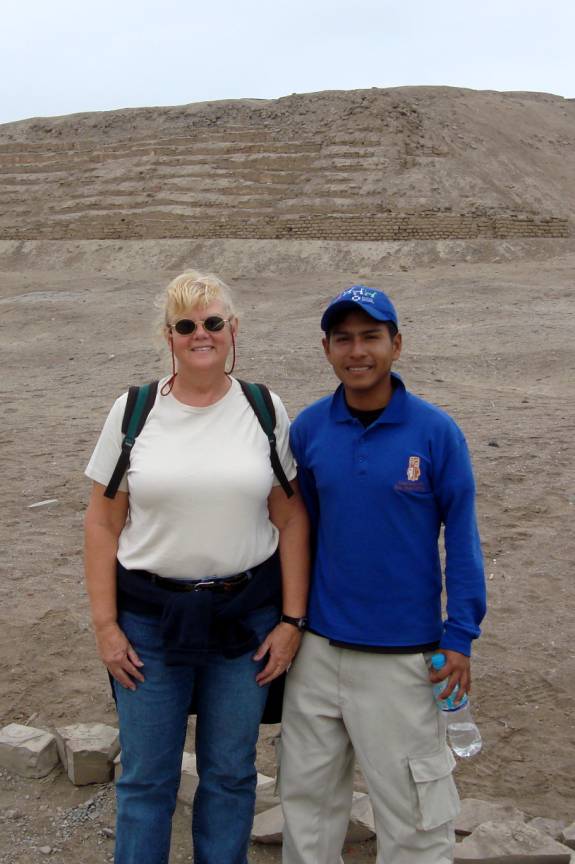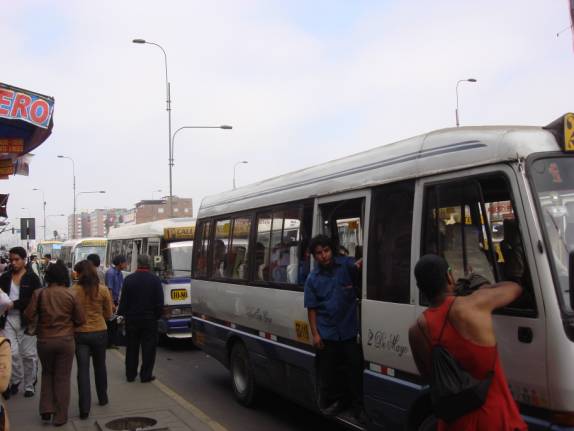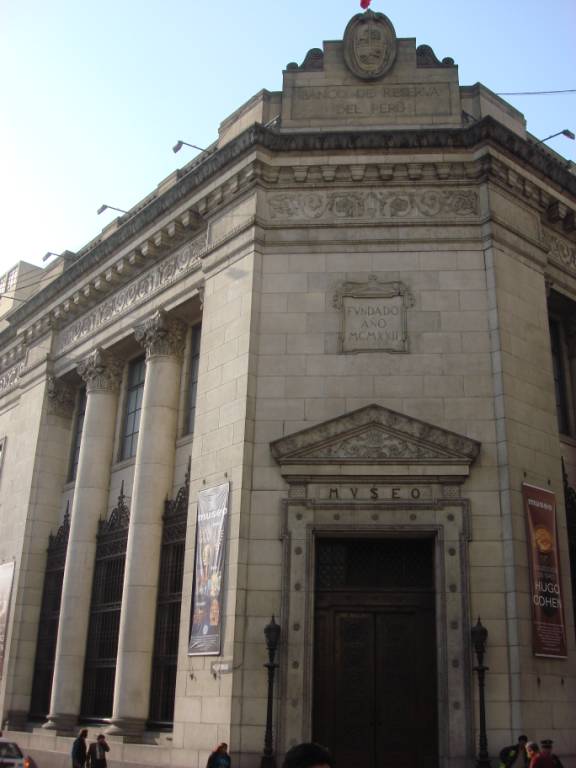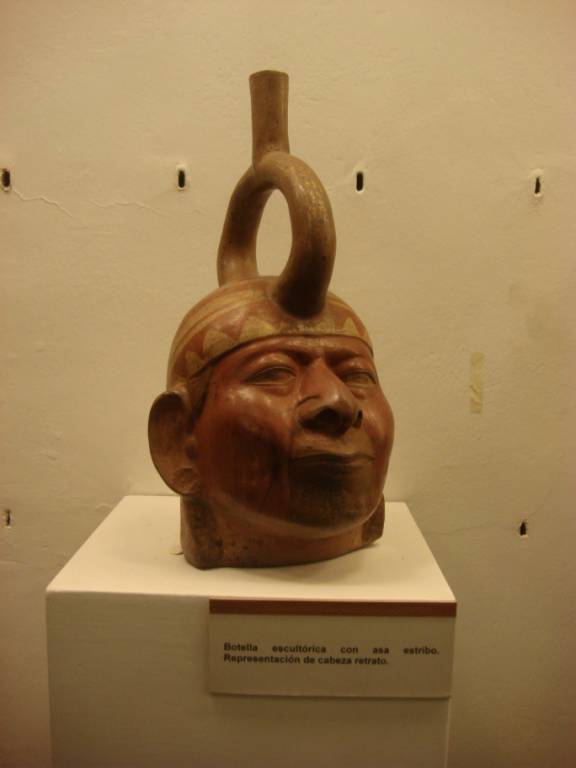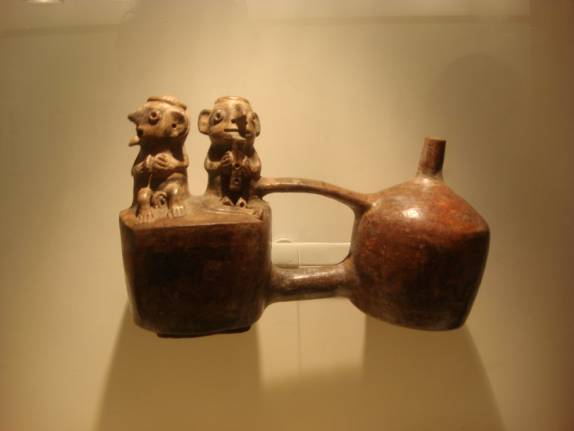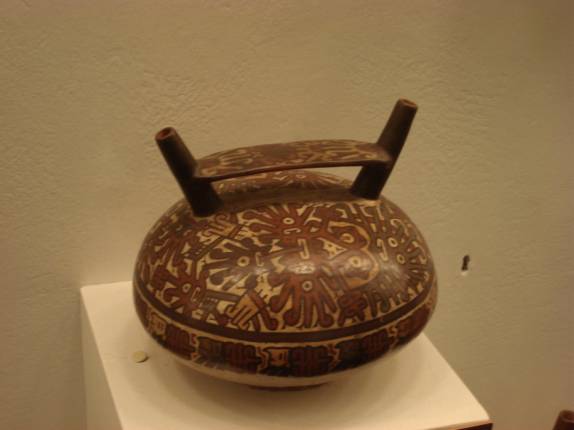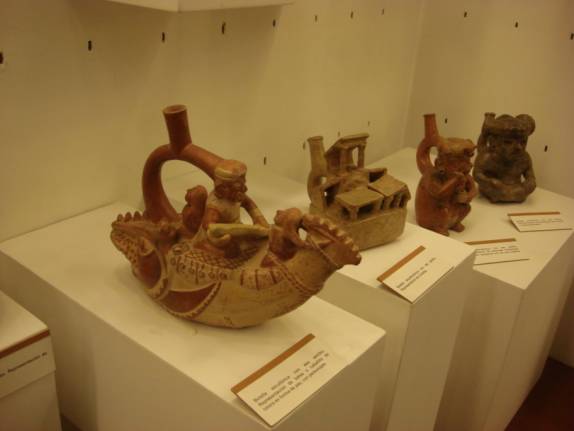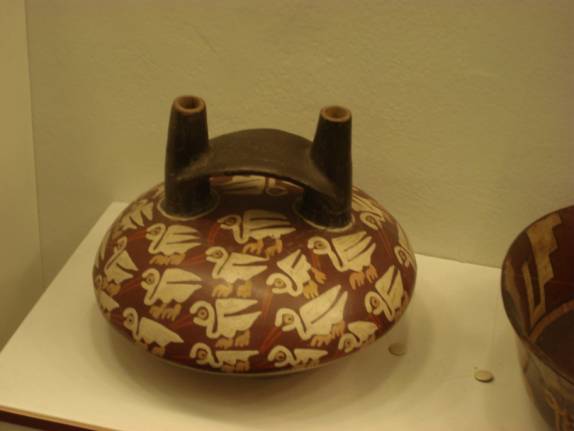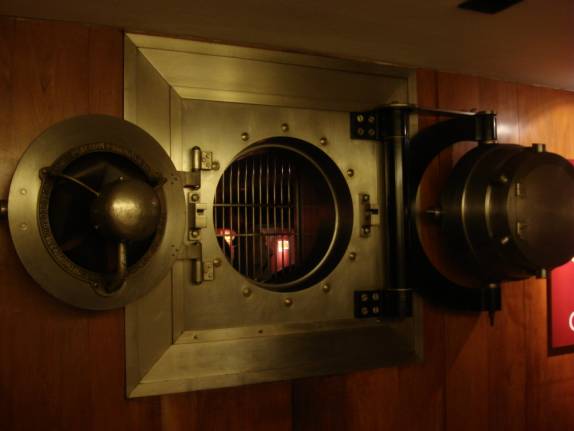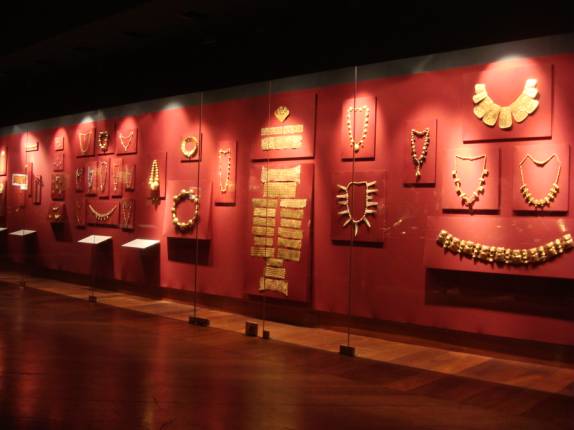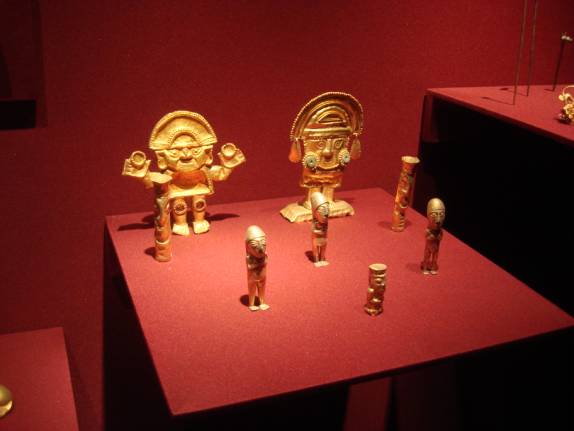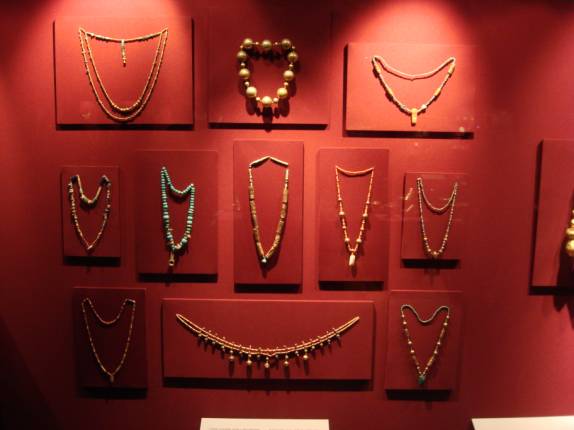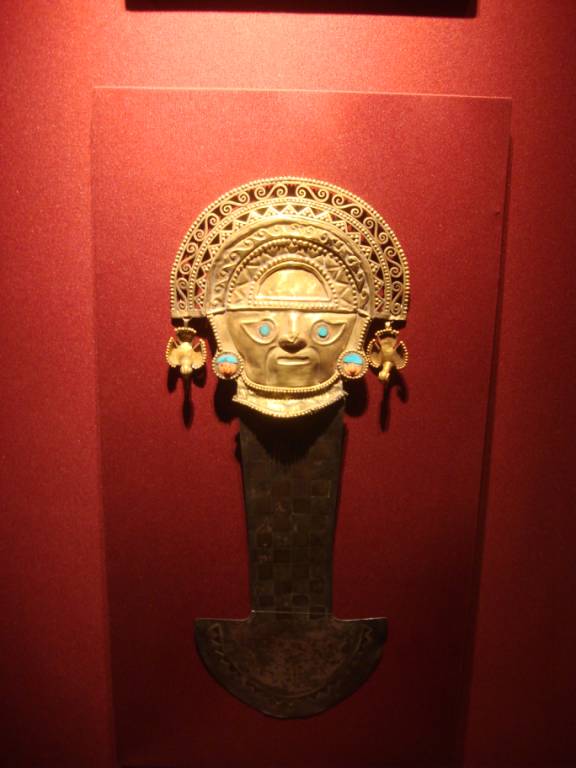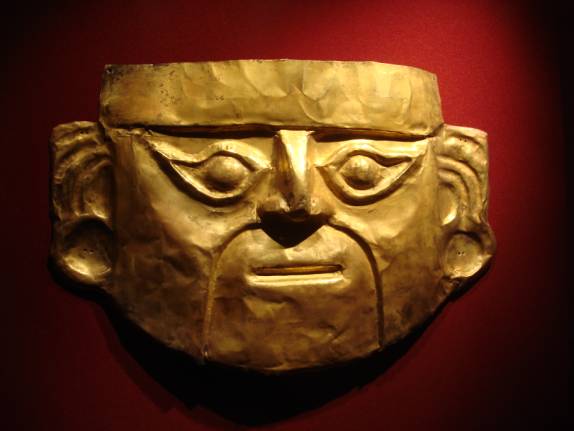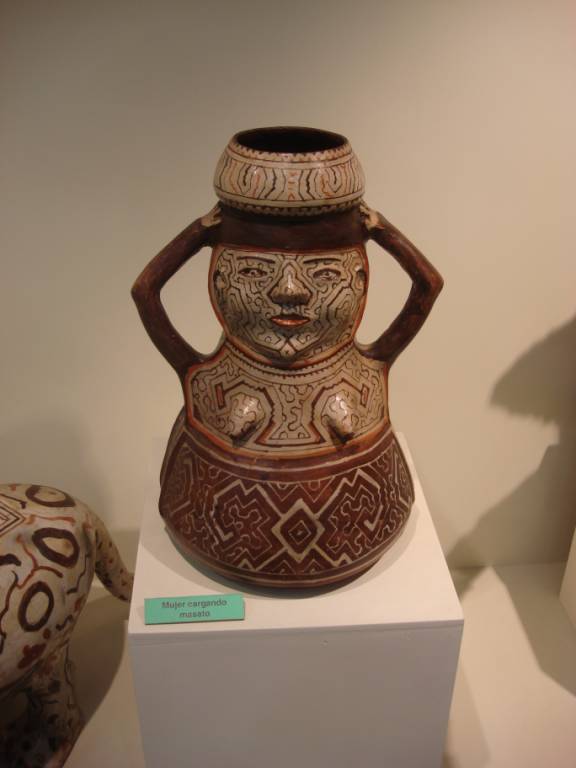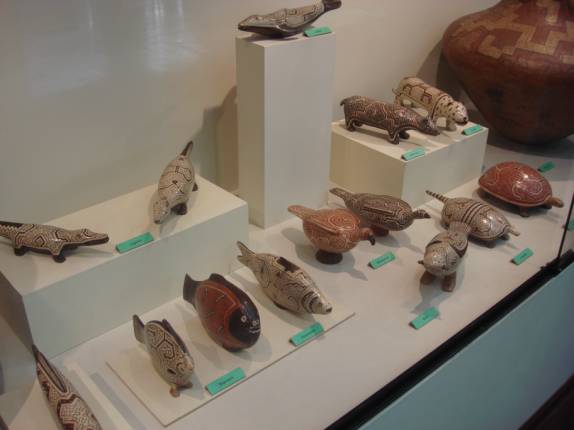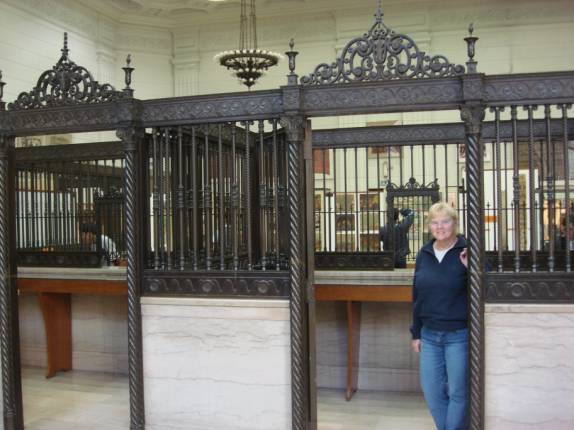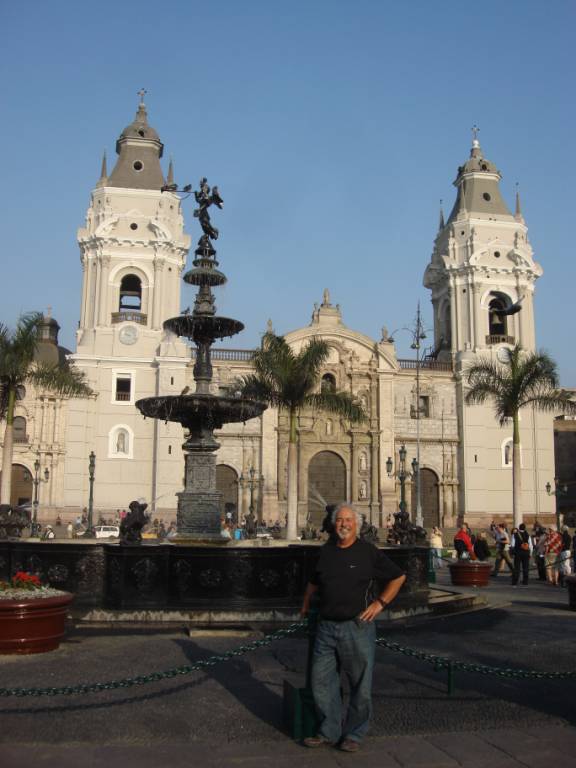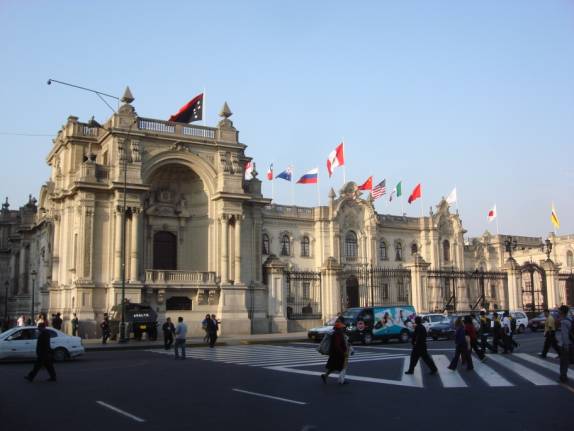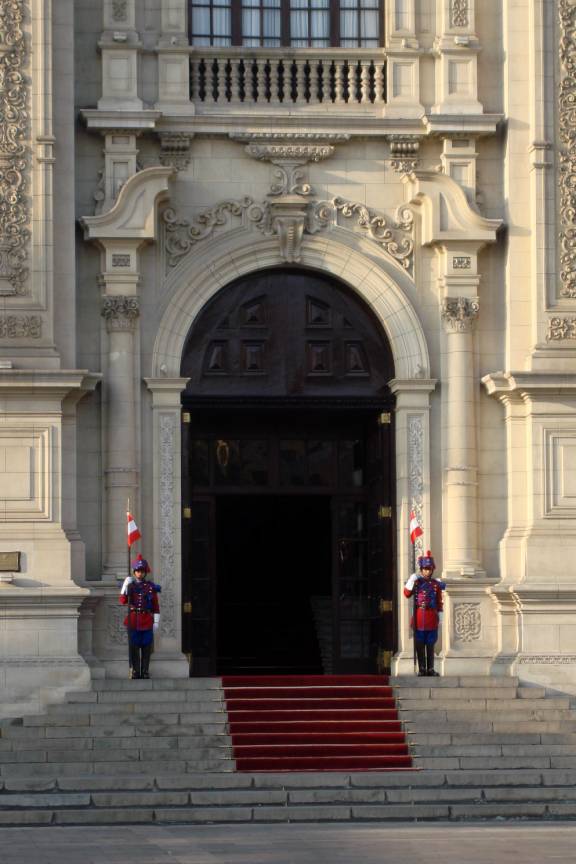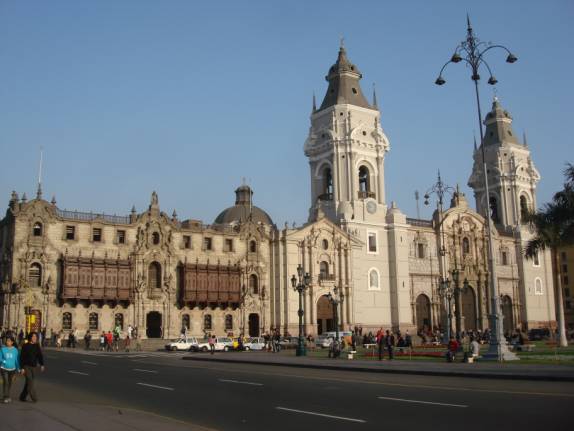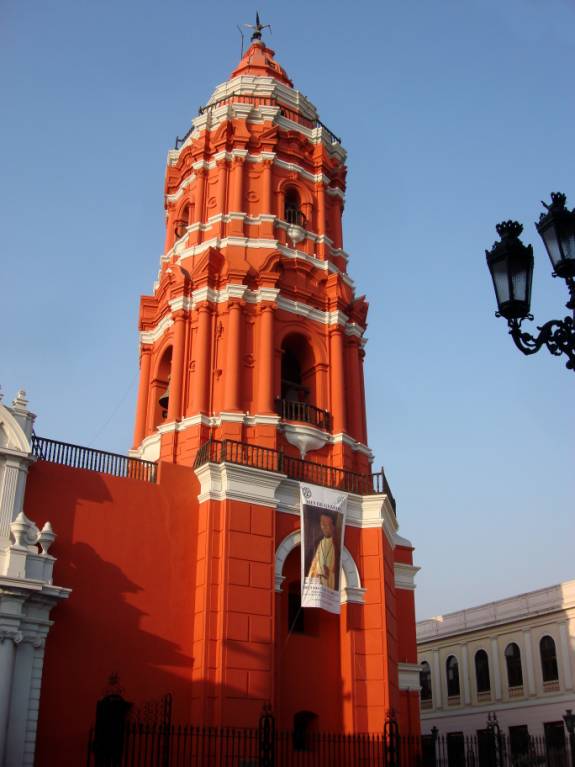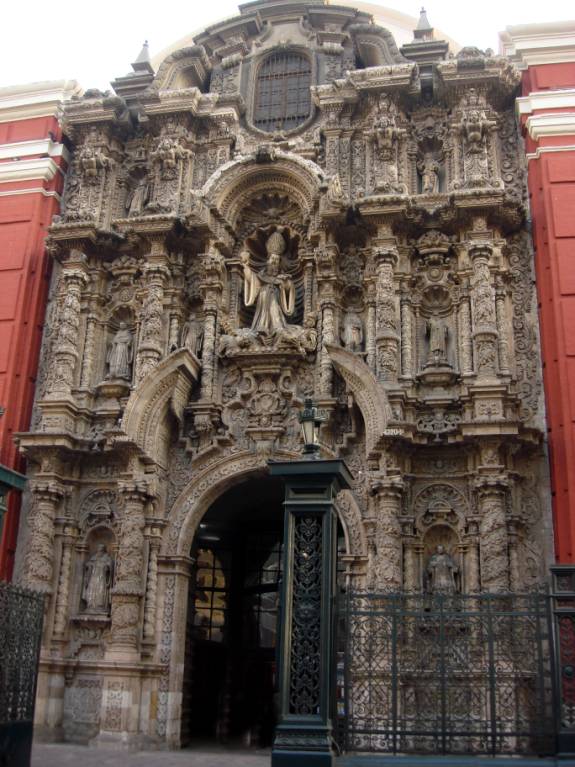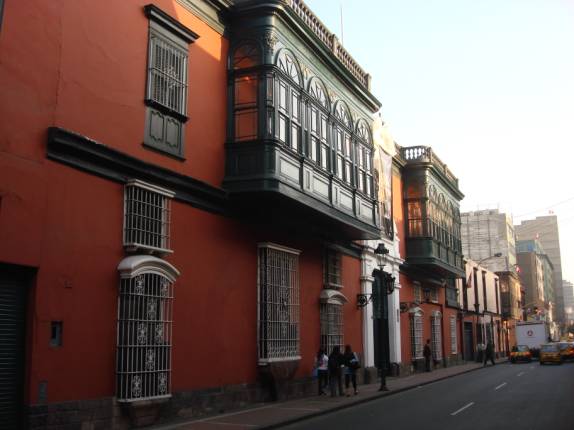|
|
|
|
Site Index:
|
UPDATE#16
08/12
thru 08/14/08
Howdy
Everybody, The
adventures of 2008 from 1/1/08 through 08/11/08 have been published on the
website.
We will continue now with this latest edition. UPDATE
2008 #16
08/12/08 through 08/14/08. At
last update, we were in the first week of our adventure trip to the South
American country of Peru.
We were visiting the mountainous areas around the north central city of
Huaraz.
This high altitude region is known as the Cordillera Blanco and the
Cordillera Negra. 08/12/08
TUESDAY
HUARAZ, ANCASH, PERU-MONTERREY-
It started out as a relaxed morning.
We had no tour booked, we had no deadlines, and we had no firm plan.
We walked to the Z-Buss station office to purchase some tickets for our
trip to Lima.
A nice tip from our tour guy, Marco, informed us that Z-Buss was running
a special to Lima during the month of August.
We jumped on that idea and managed to save a bit of coin.
After breakfast at our favorite panadoria, we dropped off a bunch of
laundry at Danny’s Lavanderia.
Isn’t it interesting how differently other countries manage to handle
their food supplies?
It kind of reminds me of “a bucket of chicken” from KFC.
One little, two little, three little chickens; four little, five little,
six little chickens; seven little…. Oh, well, you get the idea.
The main Cathedral in Huaraz was nearly destroyed in an earthquake in
1970. The
slow process of reconstruction is ongoing.
Having read about a mineral rich, thermal springs located not far from
Huaraz, we decided on a self-guided visit to the Aguas Termales de Monterrey.
The book warned that the waters might look rather uninviting due to the
brownish color.
The waters are clean and healthy, however, the mineral content includes a
lot of iron oxide that gives it the natural color.
The pools were a delightfully hot temperature and we enjoyed the
experience shared with some of the local Peruvians.
The changing room was simply a brick wall set to the open air.
We located another area for hot springs, however, the facilities were
very confusing and we could not determine the conditions without paying the
admission fee first.
We decided to forgo this set of springs and vapor caves.
With no clear destination in mind, we hopped aboard a combi collectivo
bus. When
we got to the center of Yungay, we asked about continuing uphill to the Lakes at
Parque Chinancocha.
The driver’s route was heading up that way and we joined him.
I had the prime seat in front which was perfect for taking pictures of
the countryside.
This gal proves that there is a degree of “high fashion” in the
Andes.
In the rural life of the Andes Mountains, the local indigenous people
face hardships in many, many forms.
The terrain is rugged and harsh.
The mighty Nevado Huascaran juts upward to 6768 meters (over 22,204
feet).
It was from this leviathan that the devastating avalanche of 1970 came
with its crushing mass of rock and ice.
At our last visit here, this magnificent peak was shrouded in the clouds.
Today, it boldly stands in all its glacial beauty.
The views at Laguna Llanganuco are spectacular.
The glacial water pools in the heart of the Cordillera Blanca.
It was getting late in the afternoon.
Standing at the edge of the gravel road, we weren’t having much luck
finding transportation back down to the village.
Along with us, a half dozen or more Peruvian men, most likely workers at
the lake, were patiently sitting around in wait too.
After a while, a large stake-bed truck came along.
We all waved him down and climbed into the back joining some other
locals.
Judy found a place on a huge bag of dried corn kernels.
The men stood bracing and holding on to steel bars spanning the truck
bed. The
road was very rough and bouncy.
It was a challenge for me to hang on in the very back of the truck.
To complicate the situation, there was a goat herder transporting his 5
goats in the back too.
These goats were continuously “Pee-ing” and “Poop-ing” with every
jolt in the road.
Not only did I have to hang on, but also I had to dodge the floods.
A sharp thinking Judy rolled up my pant legs so they wouldn’t drag in
the mess.
At each bump, I would go airborne and come back slamming my feet to the
metal floor.
This is what adventure travel is all about, never knowing what comes
next.
Now, here was the surprise of all surprises.
This goat herder was typically dressed for a mountain goat herder.
His clothing was clean but somewhat tattered and worn.
His sandals were made of old tires and his feet were leather tough from
years in the fields.
The ropes that held the goats had to be many, many years old and must
have been in the family for generations.
All of a sudden, we heard a strange, ringing sound.
Much to our awed surprise, the goat herder pulled out a cell phone and
began to talk in the Quechua language.
Judy and I looked at each other in almost shock.
The world is definitely much smaller when even the rural, indigenous
people can have a cell phone.
It was more proof that things are not always what they seem or what you
might expect.
By the time we got down to the town of Yungay, there were only a few of
us left huddled in the back of the truck.
Most of the others had gotten off at various remote paths along the
wayside.
For the rest of the way into the center of town, we had to walk.
We waved down a collective taxi for the long ride back to Huaraz.
We lucked out by getting in with the family of the driver.
He was taking them into Huaraz and we enjoyed almost exclusive service at
a very low price.
This delightful park walk in Huaraz is lined with lovely statues framed
by the backdrop of snow-capped mountains.
This smiling entrepreneur has a unique style to display his dishes of
regional potatoes.
Anyone?
“Papas a la Huancaina”, anyone?
With our nice, clean laundry picked up, we yielded to the urge of
returning to Samuel’s Restaurant.
This would be our last chance for their wonderful roasted chicken.
My pedometer indicated a startling 12.58 miles, however, I think that
some of that must have been from all the bouncing and jouncing in the back of
that truck.
We have had an absolutely fantastic day of sightseeing and spontaneous
adventure.
Peru is just so wonderful; “Ya Juz Gotta Luv It.”
Fortunately, we had paid a special day rate to stay in our room until our
bus was scheduled to leave.
We had some time to rest up and enjoy a hot shower before checking out at
10 pm.
The Z-Buss coach departed almost on time at 10:35pm for the all-night
trip to Lima.
The spotlessly clean, modern bus had 2 floors.
The lower level contained 16 “Bus Cama” seats that deeply recline and
have leg rests.
They are kind of like a comfortable lounging chair and are designed for
sleeping.
The upper floor has 44 of the same kind of bed seats.
We reserved our seats in the lower level.
A stewardess was aboard to serve soft drinks and snacks.
The driving crew remains separate in their own, forward compartment.
The bus company advertised the overnight trip to take 8 hours.
We expected to arrive in Lima at about 6:30am, which is about a half hour
after sunrise.
This will give us the whole day in Lima for sightseeing. 08/13/08
WEDNESDAY
HUARAZ to LIMA
The bus service was pretty good and we even managed to get a little sleep
during the night.
Much to our surprise, the 8 hour trip took only 7 hours and 10 minutes
before our arrival time of 5:45am at the Flores Bus company station at Paseo de
Republica and 28 de Julio.
It took a bit of negotiation to get a fair taxi price of S./6 ($2.25 us).
It was still before daylight and traffic was very light.
The taxi driver sped along and never even stopped for one red light.
Our hostal was located on a one-way street.
The taxi driver just backed up our street to avoid looping around the
block.
It was all quite funny and well worth a few hearty chuckles.
The great folks at the Hostal San Francisco on Azangaro, 127, had room #
203 ready for us and we were ready for it.
After a very short rest, we headed out for some sightseeing.
Our first stop was Pancho Fierro’s Restaurant across from the
Monastario de San Francisco.
They freshly prepared very good food at a very economical price.
A taxi whisked us to the San Isidro district in search of the offices of
the Ferrocarril Central Andino (Central Andes Railroad).
The location was illusive and we only found it because I had the exact
address.
There were no signs and the taxi driver had no clues.
Inside the modern office building, we were able to buy the tickets for
our train trip departing on Friday morning.
Our reservations were made via internet from the US; however, we were
unable to pay online.
We are very hopeful that this trip will be a major highlight on our
adventures.
The train only operates two times per month.
Tickets in the Tourist Class coach cost S./160 ($60 us) per person for a
one-way ride to Huancayo.
A visit to the main Cathedral National de Lima required an admission fee
of S./10.
This historical place, located at the focal point of the Plaza de Armas,
is a must see.
The original was first constructed in 1555.
A successor was begun in 1564 and was still unfinished at the
consecration in 1625.
An earthquake in 1687 and another in 1746 almost totally destroyed it.
The present reconstruction is based largely on the early plans.
An area of the Cathedral is devoted to the coffin and remains of the most
famous Spanish Conquistador and first Spanish Governor of Peru.
During the 1980’s, a fierce debate raged over the authenticity of the
remains.
A mysterious body with a disembodied head was unearthed in a crypt in the
1970’s.
After extensive testing, it was concluded that the entombed body on
display was actually that of an unknown church official.
The brutally stabbed and headless body from the crypt was actually
Pizarro’s.
The corpse was reunited with the head and transferred to the coffin in
the chapel.
Now, how’s that for an interesting story of religious and political
intrigue?
A fairly close translation of the inscription reads: Here
lies The Marquez Governor Don Francisco Pizarro. Conqueror
of Peru and Founder of Lima. Born
in Trujillo De Extremadura, Spain in 1478. Died
in Lima the 26th of June 1541.
The metropolitan government moved
here the remains on the 18th of January of 1985. To
celebrate the 450th anniversary of the founding of the city. God
is the holder of your Glory. AMEN
The rest of the Cathedral is very ornately decorated with huge statues
and devoutly religious symbols.
The woodcarvings are fabulously constructed and tell stories of Christian
historical events.
The vast majority of statuary, artwork, woodcarvings, and decorative
symbols were created, crafted, and constructed by highly-talented Peruvians
artisans.
The Museum of the Inquisition provided a
lot of insight into the historical role of the Catholic Church and the Spanish
Government. A tribunal comprised of
Catholic clergy and a Spanish government official judged the accused of
“crimes” of religious heresy, blasphemy, the belief in any religion other
than Catholicism, charges of witchcraft, and various sex offenses.
The notorious “Spanish Inquisition” continued in Peru from 1570 to
1820 AD. Lifesized
models are used to portray the events, situations, and conditions relative to
the historical perspective.
In this room the inquisitors
held their hearings and ‘charged’ the prisoners.
Only recognized Catholic witnesses could testify in the defense.
The intricately carved wood ceiling is held together without the use of
any nails or screws.
It is very impressive.
The ‘Chamber of Secrets’, used as an archive for the court of the
Inquisition, secretly stored all the files corresponding to the judgments and
other secretive activities of the inquisitors.
This was the ‘Room of Restrainments’. Detainees that tried to resist
or escape the prison and the Tribunal were placed here and remained shackled, or
in stocks, bound by hands and feet (painfully restrained – to break their
spirit and keep them from trying again…).
In some cases, the Tribunal used the so-called ‘questioning of
torture’. Mainly when the statement of the accused was contradictorily or he
refused to confess. The use of torture by the Tribunal was ‘only’ applied in
about 6% to 9% of all cases. Although painfully brutal, torture procedures were
claimed to be somewhat limited.
While a prisoner was being tortured an inquisitor and a doctor were
always present.
The average time of such a procedure was not longer then 15 minutes.
Ouch!!!!!
“Okay, Okay, I give up!
I repent!”
This form of torture was most common for women.
Water was poured on the face to simulate the feeling of drowning.
Sound familiar?
The Inquisition used two different kinds of prison cells: the public and
the secret ones. The public cells were used after the verdict was pronounced and
the prisoners served out their sentences according to the judgments of the
Tribunal.
Wealthy prisoners had to finance their stay on their own – you can only
imagine what that meant. These cells were, by prison standards at the time,
quite clean, the food may have included meat, fruits, eggs, milk, cheese, and,
perhaps, even some wine. Some wealthy prisoners were allowed to receive visits
from friends and relatives. Of course, they all had to be recognized adherents
to the Catholic faith.
The Holy Office financed the ‘detainment’ of poor prisoners.
The secret cells could not have been very much fun. Most the time, the
prisoners were locked away without even telling them the reason. The official
charge was sometimes held back for weeks, month or even years and absolute
isolation was maintained.
I wonder, “What will this gal be accused of?”
She looks kind of guilty to me.
Out on the street, this cart vendor was hawking some of
the most gorgeous strawberries that I’ve ever seen.
At S./1.5, a whole Kilo (2.2 pounds) sells for the equivalent of about
$.55 us.
That is less than 25 cents a pound.
How many Kilos would you like?
The grounds and architecture of the Congreso (Congress) building are
captivatingly beautiful.
Desamparados, the historic Lima train depot.
The impressive balconies of the “Palacio de Arzobispal”
(Palace of the Archbishop of the national Cathedral)...
The historic “Casa De Correos Y Telegrafos” (Post Office and
Telegraph Office).
Of course, Judy had to peruse a few of the jewelry bead shops again.
She was accumulating ideas and mentally preparing her shopping list
The Cathedral de Lima at night is certainly awe-inspiring.
The surrounds of the Plaza de Armas in the historical center of Lima....
We had dinner under one of the porticos near the Plaza.
Although the pedometer only registered 6.26 miles, we were quite tired
from our very full day. 08/14/08
THURSDAY
LIMA
Judy was up 45 minutes before the 8am alarm sounded.
The allure of a long soak in the nice hot shower held her attention.
It was breakfast at Pancho Fierro’s Restaurant again this morning.
With only about 8 small tables, the service is friendly and the food is
quite good.
There are some famous ruins outside of Lima.
I was confident that I could handle an independent visit to the site.
It took us quite a while and a lot of questions to locate the correct,
local mini-buses to transport us to the ruins.
The stop for the main mini-bus had changed due to the opening of a new
road section.
We finally found the Parada (bus stop) on the lower level of the new,
Grau Expressway.
Our destination was the ruins of Pachacamac.
Strange as it seems, buses marked ‘Pachacamac’ do not go there.
We finally learned that the buses marked “San Bartola” provide the
correct route that drops you at the front gate of the site.
The packed mini-bus takes about an hour.
We located a nice young fellow to guide us about the extensive grounds of
the ruins.
Our “Guia” is a student at the university in Lima and is fluent in
English.
The temple of Pachacamac
is an archaeological site 40 km southeast of Lima in the Lurín River Valley. It
already had at least one pyramid, a cemetery and a multicolored fresco of fish
by the period 200-600 AD. Later, the conquering Huari Culture (600-800 AD)
undertook construction of the city, probably using it as an administrative
center. A number of Huari influenced designs appear on the construction in this
period and on the ceramics and textiles found in the cemeteries of this period.
After the collapse of the Huari empire, the Ichma culture at Pachacamac
continued the growth as a religious state for the veneration of the Pacha Kamaq
(Earth Creator), or creator god. The majority of the common architecture and
temples were built at this stage (800-1450 AD).
The Ichma joined the Inca empire and Pachacamac became an important
administrative center. However the Inca maintained it as a religious shrine and
allowed the Pachacamac priests to continue functioning independently of the Inca
priesthood. This included the Pacha Kamaq, whom the Inca presumably consulted.
Pacha Kamaq ('Earth-Maker') was considered the creator god by the peoples before
the Inca conquest. He was reluctantly taken into the Inca religeous structure,
but Pacha Kamaq was seen mainly as an ineffective rival of Viracocha, the
traditional “Sun God” that reigned highest in the Inca Culture. The Inca
continued to build five additional buildings, including a temple to the Sun on
the main square.
The sandy grounds are spread out over a large area and require a lot of
walking and climbing.
The “Mamaconas” or “Acllahuasi” translates to “the house of the
chosen women."
Here, almost 200 beautiful maidens lived; they were dedicated to the cult
for service to the Sun God, the Inca nobility, and the Inca priesthood.
The Inca culture continued to develop the temple site until the conquest
of the Spanish under the forces of Pizarro in 1535.
The temples were destroyed and the Sun God devilified as blasphemy to the
Catholic theology.
It was along this pathway that Francisco Pizarro led the conquering army
to inflict another crushing blow to the Inca Empire.
Ramps such as this one were used to raise the heavy, adobe building
blocks used in the temple constructions.
The highest edifice, the Temple of the Sun, was constructed by the Inca
Culture to honor “Viracocha”, their highest deity. Construction took place
during the final period at Pachacamac.
The Temple of the Sun overlooks the Pacific Ocean and several islands.
From this temple summit, you are in an ideal place to contemplate
the two legendary islands known as Cavillaca and her small daughter. Cavillaca,
a beautiful young lady, was coveted by all the huacas (gods) of the neighboring
districts. One day, the god Cuniraya Viracocha walked disguised as a beggar and
deposited his own semen in a piece of fruit that she ate.
There was a lot of walking through these extensive grounds.
Fortunately, the way back was mostly downhill.
We had been very fortunate to have such a good guide that taught us much
of the history and in good English so we could understand much of the importance
of this marvelous site.
In Lima central, lines of mini-buses call out for riders.
Our bus from the ruins dropped us off at this busy, downtown location.
From here, we had to find a connecting bus along the intersecting Abancay
Street.
In Lima, we had lunch at Restaurante Acllahuasi.
If you remember, that is the same Quechua name for “the house of the
chosen women”.
It was pretty good, however, it seems like most of the ‘chosen gals’
must have gone out to lunch somewhere else.
We located and walked to the Museo Banco Central De Reserva Del Peru.
Although the admission is free, you must leave your passport with the
security guards at the entrance.
No passaporte, No entrada!
The former Central Reserve Bank now houses an extensive collection of
pre-Columbian, archaeological artifacts.
My sister, living in the Phoenix, Arizona area, has a deep interest in
native North American pottery.
I will be interested in her thoughts on South American indigenous
pottery.
Most of these pottery vessels were created and designed for the drinking
of important liquids.
Within the huge, old, high-security bank vault, the museum displays a
wonderful collection of Inca artworks made of gold and precious metals.
The Sun God, Viracocha, was a favored symbol in many of their creative
works.
The Tumi is a
sacrificial ceremonial knife distinctly characterized by a semi-circular blade,
made of either bronze, copper, gold-alloy, or silver alloy; used by some Inca
and pre-Inca cultures in the Peruvian Coastal Region.
The Tumi may also have been used in the ceremonial rituals of
mummification and certain burial preparations for important leaders.
Beautiful masks of gold…
This vessel depicts a ‘mujer cargando masato’ or a woman toting an
ancient drink made from mashed, fermented Yucca.
It may have been used to drink the mixture from.
Tortoises, birds, mammals, fish, and reptiles were favorite
subjects for their decorative artwork.
An interesting numismatic display of early monies from around South
America was displayed within the decorative ironwork of these historic teller
cages.
Yes, I know this is hard to believe, but that is actually a blue sky over
Lima.
The edifices and architecture are marvelously enhanced by the mere
addition of a little sunshine.
A regal contingent of colorful ceremonial guards stands watch at the
Palacio de Gobierno.
Let the “Madness” begin!
Judy’s mind has been racing wildly since she spotted that first bead
store last week. She was primed;
She was eager; She was ready! With
an adamant fervor, she attacked the bins and shelves of the numerous jewelry
bead vendors. Lima has not seen
determination of this magnitude since the Spanish Conquistadores swarmed the
city nearly 500 years ago. With a
vengeance more determined than Pizarro himself, she picked through and selected
her personal choice favorites to fill her mounting larder of jewelry makings.
She literally dragged me through the myriad of stores (perhaps a million,
or maybe not quite that many) with racks and bins overflowing with the bright,
shiny pieces.
No strand, no bobble, no clasp, and no ornament went unnoticed.
The dedicated fanatic was in relentless pursuit for over 3 continuous
hours (actually, it was closer to 4 hours, but who had the strength to count by
then).
My job was to interpret and negotiate.
Although not much negotiation was effective, I think that we avoided the
common pitfall of tourist overpricing.
With prior approval to safely stash her purchases at the hotel for the
next few weeks, she found the bargains too much for a gal to resist.
She ended up with quite a large cache of supplies and significantly less
cash in her wallet.
Nearly exhausted, we returned to Restaurante Acllahuasi for dinner.
At the place named for “the house of the chosen women”, apparently
again, none of those ‘chosen gals’ had yet returned.
Oh well, maybe in the reign of the next culture.
With all the jewelry beads safely stored by the cooperative hotel staff,
we packed our bags and readied ourselves for a very early, morning departure on
that very special train. TO BE CONTINUED……..SOON. This concludes this edition of the AMARSE
Update logs.
Thanks for allowing us to share our life and adventures with you. Lotsa
Luv, Fred
Reed and Judy Law AMARSE MT40 "AMARSE". is pronounced "AM-ARE-SAY". Our website is:
www.amarse.net .
|
|
Fred H. Reed |
www.amarse.net © 2006 2007 2008 2009 2010 2011 |

